1913 Armory Show
The Smithsonian Institution's Archives of American Art commemorates the centennial of the International Exhibition of Modern Art, known as the 1913 Armory Show. It was the first major exhibition of European modern art in the U.S. The show opened in New York in February and traveled to Chicago in March and Boston in April. The Archives holds the official records of the Association of American Painters and Sculptors (AAPS), the group who organized it. The Archives also holds the papers of key organizers. This timeline features more than 150 primary sources from these and other materials. The letters, telegrams, minutes of meetings, memos, and other documents offer insight into the development and presentation of the show. Many reveal details about the organizers; others provide information about how artists, critics, and others responded to the exhibition.

61180
Early Meeting of Association of American Painters and Sculptors (AAPS)
1911-12-14 00:00:00
1911-12-14 00:00:00
Four artists assembled at the Madison Gallery in New York City to discuss the contemporary art scene in the United States.
"On Dec. 14th 1911, the following men: Messrs Henry Fitch Taylor, Jerome Myers, Elmer L. Mac Rae and Walt Kuhn met to discuss the possibilities of organizing a society for the purpose of exhibiting the works of progressive and live painters, both American and foreign, favoring such work usually neglected by current shows and especially interesting and instructive for the public," recorded by Walt Kuhn in the minutes.

60935
Letter to Vera from New York
1911-12-15 00:00:00
1911-12-15 00:00:00
Walt Kuhn, an artist, wrote to Vera, his wife who was staying with her mother in Chevy Chase, Maryland. He was in New York for a show of his work at the Madison Gallery. In this letter, he shared some of the earliest details of his ambitious plans for a society and an exhibition devoted to modern art. He wrote,
"…My idea about the new Society is about this: A big broad liberal organization embracing every kind of art, even that which I do not like, one that will interest the public. The soft boys must be there too. The thing must be started so that it can grow and be as big or bigger than the academy within 2 or 3 years. I will have the backing of the Madison Gallery, for they are positively non-commercial…I don't want to be the president of the thing, if I can work it, it will be Glackens. Of course I may take a minor office, such as Secretary, which although involving labor will pay in publicity. Don't worry, I'll be the real boss, but it will be under cover. I'm not looking for the title of impresario. I now feel that I can stand on the record of merit of my work and believe that any honest method which will foster the publicity of it and my name is legitimate. Why shouldn’t I use my talent as an organizer….
I will retain the exclusive privilege of doing the talking to the press, which will be short but to the point. I want to get a reputation for absolutely liberality and broad mindedness.
We may not be able to have a show this year but must be organized as a body before we can expect any outside interest or assistance… Have made up my mind not to touch the thing unless it can be big enough to prevent people calling it a certain group, which would injure my 'stand alone' attitude. If it's big enough, it will be just as though I had a picture hanging in the Pittsburgh or Philadelphia show and would not affiliate me with any bunch.
More about this when we get together. I feel absolutely certain that the thing can be done and just think of the publicity! …I’ve shown them that I can paint; now I’ll show them that I can fight.
It’s hard to go home and make comics with such stuff on one’s mind. It’s like an elephant trying to thread a needle.
Love
W."

61180
AAPS Convened
1911-12-19 12:37:55
1911-12-19 12:37:55
Henry Fitch Taylor, an artist who managed the Madison Gallery, invited more than a dozen other artists (all men) to meet at the gallery at 305 Madison Avenue. These men formed the core of what became the Association of American Painters and Sculptors (AAPS).
Taylor conducted the meeting and Kuhn recorded the minutes. They elected officers: J. Alden Weir, president; Gutzon Borglum, vice president; Kuhn, secretary; Elmer MacCrae, treasurer; Taylor, chairman of committee of the whole; and Jerome Meyers, Leon Dabo and Joseph Fraser executive committee.
They incorporated "for the purpose of developing a broad interest in American art activities, by holding exhibitions of the best contemporary work that can be secured, representative of American and foreign art."
Taylor explained, "You have been invited here this evening to take active steps towards the formation of a national association of painters and sculptors—an association of live and progressive men and women who shall lead the public taste in art rather than follow it."

61180
AAPS Convened
1912-01-02 00:00:00
1912-01-02 00:00:00
Fourteen members of AAPS assembled. They nominated men, and discussed a draft of the constitution.
Proposed and elected members included Solon Borglum, O'Connor, Paul Batlett, F. R. Roth, George Gray Barnard, George Bellows, Maurice Prendergast, Edward Adam Kramer, Guy du Bois, B. Boroughs, Frank Nankivell, John Sloan, Everett Shinn, Childe Hassam, and Bruce Porter.
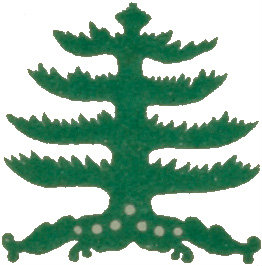
61182
News of 'Revolt'
1912-01-03 00:00:00
1912-01-03 00:00:00
The New York Times published an article about the formation of AAPS on page two of the daily newspaper.
The headline announced, "Artists in Revolt, Form New Society."

61180
Weir Resigned
1912-01-03 09:00:00
1912-01-03 09:00:00
J. Alden Weir resigned his post as President of the newly-formed AAPS because of an article in The New York Times that said the group was founded in opposition of the National Academy of Design.

61441
Negotiated Use of the 69th Regiment Armory
1912-04-19 00:00:00
1912-04-19 00:00:00
On behalf of AAPS, Walt Kuhn entered into negotiations with Col. Louis D. Conley to lease the 69th Regiment Armory for $5,000 plus a $500 fee for additional personnel.

61441
Formal Lease for the 69th Regiment Armory
1912-05-06 00:00:00
1912-05-06 00:00:00
Col. Conley issued the formal agreement to lease the facility from February 15 to March 15, 1913.
The lease ensured that Association of American Painters and Sculptors pay a fee to provide for extra janitors to clean and assistants to guard the Armory's facilities. Col. Conley declined a request to provide extra time in the Armory to install and remove the show without further compensation. He also denied a request for extra storage space in the basement because of the need to store 16 army wagons during the exhibition.

61180
AAPS Directors Met
1912-07-31 00:00:00
1912-07-31 00:00:00
AAPS convened the first regular meeting of directors at 59 W 39th Street, New York. They elected officers and members of the incorporation.
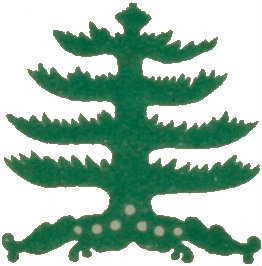
61442
AAPS Looked to Europe
1912-08-01 00:00:00
1912-08-31 00:00:00
AAPS leadership looked abroad to developments in contemporary art and exhibitions as they planned their show for the United States. By August 1912, they decided to dispatch Walt Kuhn to tour Europe. Kuhn's itinerary included major exhibitions and major art capitals.
Correspondence between Walt Kuhn and Vera, his wife, and between Kuhn and Arthur B. Davies contains their considerations, impressions, and negotiations. Kuhn reflected upon his trip through Europe in his publication The Story of the Armory Show (1938).

61180
Schamberg Mentioned AAPS to Walter Pach
1912-08-23 00:00:00
1912-08-23 00:00:00
American artists learned about the exhibition and shared the news with each other. Morton Schamberg, a Philadelphia-based artist wrote to Walter Pach in Paris.
He asked Pach, "Do you know there's to be an exhibition in N.Y. this winter of American Painters and Sculptors (a new organization as far as I know) I got an invitation to exhibit with them the other day. It was rather funny as I have just gotten to the point where I don't care whether anyone sees my pictures for years to come. I don't expect to sell any and don't need to if the photography goes and while I'm glad to show them to anyone who is interested I can say to hell with the exhibitions and dealers. However this thing sounds as though it may be worth while. Will see."

61180
Planned Trip to Europe
1912-09-02 00:00:00
1912-09-02 00:00:00
Arthur B. Davies, an authority on important works in Europe, wrote to Walt Kuhn and that suggested that Kuhn talk to August Deusser, a painter and one of the planners of the Sonderbund exhibition. Davies hoped, "I wish we could have as good a show as the Cologne Sonderbund."
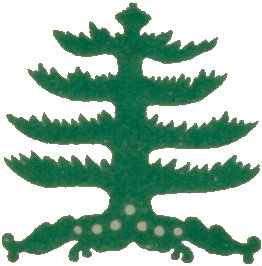
61442
Kuhn's Itinerary
1912-09-23 00:00:00
1912-11-30 00:00:00
Arthur B. Davies advised Walt Kuhn about his trip. As Davies described artists and art movements in Europe, Kuhn wished to see for himself. They corresponded while Kuhn was on a painting trip in Nova Scotia.
Kuhn later recalled, "In a flash I was decided. I wired him to secure steamer reservations for me; there was just time to catch the boat which would make it possible to reach Cologne before the close of the show. Davies saw me off at the dock. His parting words were, 'Go ahead you can do it!'"
Kuhn embarked on a six week tour. He crossed the Atlantic aboard the Hamburg-Amerika line. He arrived in Plymouth, England on Friday, September 27. He continued to Hamburg and arrived on Sunday, September 29. He pressed on to Cologne, arriving the day the Sonderbund exhibition closed. He visited the show as organizers dismantled the galleries. Still, he studied their presentation strategies, surveyed the art, and met with key figures. He made a couple of side trips to Dusseldorf by car.
From Cologne, he departed to The Hague. From Holland, he hurried to Munich and Berlin. He then left Berlin for Paris, arriving on October 25.
In Paris, he met Walter Pach, who later acted as the European agent for the International Exhibition of Modern Art.
Arthur B. Davis joined Kuhn and Pach in Paris. They traversed Paris by taxi, meeting with artists, dealers, and collectors.
Pach remained in Paris while Kuhn and Davies proceeded to London to see Roger Fry's Second Grafton Gallery Show.
Kuhn and Davies, exhausted and excited, sailed from England back to the United States in early November.

60935
Letter to Vera aboard Ship
1912-09-25 00:00:00
1912-09-25 00:00:00
When Walt Kuhn traveled, he corresponded faithfully with Vera. The letters he wrote while in Europe in 1912 allow us to learn about his preparations for the exhibition.
In this letter, Kuhn wrote to Vera about his Atlantic crossing. He explained how he prevented seasickness, and feared, "I only hope that I'm not woozy next Monday-that Cologne show is important." He described passengers; two pages of the letter feature drawings of other characters aboard the ship. These anecdotes reveal Kuhn's preferences and prejudices.

61442
Kuhn Visited Sonderbund
1912-09-30 00:00:00
1912-09-30 00:00:00
At Arthur B. Davies's suggestion, Walt Kuhn traveled to Cologne to view the Internationale Kunstausstellung des Sonderbundes Westdeutscher Kunstfreunde und Künstler zu Cöln, 1912.
He described his visit to the exhibition in The Story of the Armory Show (1938).
He recalled, "The Cologne Exhibitions, housed in a temporary building had been well conceived and executed, in fact, it became in a measure the model of what we finally did in New York. It contained a grand display of Cézannes and Van Goghs, including also a good representation of the leading living modernists of France. The show had languished through half of the summer, much maligned by the great citizens, but toward the end burst forth as a great success, with big attendance and many sales. I arrived in the town on the last day of the exhibition. In the midst of all the travail of the closing of the show's business, I could get but scant attention from the management. However through the courtesy of one of its directors I was permitted to browse at will during the time of its slow dismantling. Needless to say, I crammed myself with all information possible. Van Gogh's work enthralled me as much as any. I met the sculptor Lehmbruck and secured some of his sculpture, also works by Munch, the Norwegian, and many others through the courtesy of the show's management. I received letters to collectors in Holland, departed to The Hague, where I first laid eyes upon the work of Odilon Redon, the Frenchman up to then unknown in America, and not very much considered in Paris.

60935
Postcard to Vera from Cologne
1912-09-30 00:00:00
1912-09-30 00:00:00
Kuhn briefly reviewed the Sonderbund exhibit ("great show") and mentioned his meeting with Edvard Munch. He observed, "Van Gogh and Gaugin great! Cézanne didn’t hit me so hard."

60935
Letter to Vera from Cologne
1912-10-02 00:00:00
1912-10-02 00:00:00
Walt Kuhn composed an 11-page letter to Vera. This letter offers a contemporaneous account of his experience of the Sonderbund and its significance.
In the correspondence, he shared impressions of the exhibition; of artists and/or their work including Munch, Younghaus. Cézanne, Van Gogh, and Gauguin; and organizer Fienhals. He discussed further travel arrangements and visits to other artists, collectors, and exhibitions. Additionally, he reviewed his lodging and sketched the interior of his hotel room in Cologne. He sent the annotated drawing along with the lengthy letter.

61180
Davies Letter to Pach
1912-10-02 00:00:00
1912-10-02 00:00:00
Arthur B. Davies addressed a number of matters with Walter Pach. This letter offers insight into how the organizers collaborated and divided tasks.
Davies reported that a Cézanne painting "is now reposing" at Macbeth Gallery. He provided details of problems with customs. He also explained that because of "domestic troubles" he was unable to accompany Walt Kuhn in search of artists for the exhibition. He boasted, "The possibilities loom tremendous yet so many can only see another opportunity of showing their work." He explained, "You can do so much for Kuhn in every way and I also believe he has a really healthy outlook with considerable ability."

61180
Letter to Walt Kuhn with Flooplan
1912-10-04 00:00:00
1912-10-04 00:00:00
Arthur B. Davies wrote Walt Kuhn after receiving two letters from him. Davies updated Kuhn on plans and press reactions. Davies included a diagram of the layout of the show and asked, "Please make suggestions and practical improvements. It has made some eyes bulge."
At the bottom of the plan, Davies warned, "This is to roughly indicate what's doing. Don't show to any one out side of the family."

60935
Postcard to Vera from Düsseldorf
1912-10-05 12:37:55
1912-10-05 12:37:55
Walt Kuhn explained to Vera that he was en route to Holland via Düsseldorf. He traveled in pursuit of Cézannes, Van Goghs, and other paintings. After Holland, he planned a trip to Berlin, and estimated his arrival in Paris by November 1.

60935
Postcards to Vera from The Hague
1912-10-07 00:00:00
1912-10-07 00:00:00
On October 7, Walt Kuhn wrote to Vera from The Hague. He informed her of his success: "6 to 10 Van G[ogh]'s" and his plans to head to Amsterdam. From Amsterdam, he reported on a "dandy restaurant" and his four hour layover en route to Berlin via a sleeper train.

60935
Postcard to Vera from Berlin
1912-10-08 00:00:00
1912-10-08 00:00:00
On the morning of his arrival in Berlin, Kuhn jotted a note promising to write later and reported that he had heard from Pach in Paris that everything is "o.k."

60935
Letter to Vera from Berlin
1912-10-08 18:00:00
1912-10-08 18:00:00
Walt Kuhn's correspondence with Vera offers insight into the challenges of making a major tour for the exhibition. Walt Kuhn wrote a lengthy letter to Vera from Berlin. In it, he wrote of his travels and accommodations in Cologne, The Hague, and Berlin. In comic, poetic and occasionally problematic terms, he discussed the people and places he visited. He also explained his efforts to secure works to exhibit, in particular his search for works by Van Gogh and Cézanne.
He explained that he was too tired from his efforts for the exhibition to make any sketches.
He clarified, "Being on a trip of this sort is so different from any I've ever tackled. I can't forget it isn't my money, and that I will have to produce its' value. However, as soon as I get through with the stars, Van G[ogh] + Cezanne, I'll feel as though there is something coming to me and when I get to Munich I'll take a day or two off. Being spruced up all the time spoils things too. lately I've shaved every day. I almost feel like a traveling salesman."

60935
Postcard to Vera from Berlin
1912-10-09 00:00:00
1912-10-09 00:00:00
The pace of the trip wore on Walt Kuhn as he pursued art and artists.
Kuhn complained to Vera, "No good at being alone in Germany, am anxious to get through and go to Paris."

61180
Davies Letter to Kuhn
1912-10-10 12:37:55
1912-10-10 12:37:55
Arthur B. Davies, in New York, wrote to Walt Kuhn, in Germany. Davies discussed preliminary plans for the exhibition. Davies updated Kuhn about the lease arrangements public relations, and artist participation. He compared their efforts to those of others in England.
He concluded, "The great success in London cannot be compared with what may be attained here if we get the start."

62110
Picasso's List
1912-10-10 12:37:55
1912-10-10 12:37:55
Organizers consulted an array of experts about what to exhibit in New York. Pablo Picasso recommended a list of artists for the show. He used phonetic spellings. Among others, Picasso listed Marcel Duchamp, Fernand Léger, and Juan Gris.

60935
Postcard to Vera from Munich
1912-10-15 12:37:55
1912-10-15 12:37:55
Walt Kuhn wrote to Vera of his arrival in Munich. He observed, "Finally 'wedged my way in' in Berlin. Everything o.k. Success now assured. Hope that the NY end is not being neglected."

60935
Letter to Vera from Munich
1912-10-16 12:37:55
1912-10-16 12:37:55
In correspondence with Vera, Walt Kuhn's vacillated between exuberance and confidence, and frustration and disappointment. In a lengthy letter to Vera, Kuhn discussed the challenges he encountered in Berlin and his interactions with various artists and dealers.
He concluded, "This trip has been a god send. I never knew what possibilities there were."

60935
Postcard to Vera from Munich
1912-10-16 12:37:55
1912-10-16 12:37:55
Walt Kuhn dashed off a note from a new cafe in Munich. Another correspondent greeted Vera Kuhn in German.

60935
Postcard to Vera from Munich
1912-10-18 12:37:55
1912-10-18 12:37:55
Walt Kuhn shared disappointments with Vera in this postcard. He complained that Zügel, an artist, has not progressed in his work since they last met, and he lamented, "Munich is absolutely dead as an art city. They haven't kept pace with the times at all-After having once again looked over my old haunts, the charm is gone, and I will not be sorry to go away."

60935
Postcard to Vera from Munich
1912-10-23 12:37:55
1912-10-23 12:37:55
As Walt Kuhn concluded business in Munich, he wrote to Vera. He rested because he was "down and out after Cologne and Berlin."

60935
Postcard to Vera from Munich
1912-10-23 12:37:55
1912-10-23 12:37:55
Walt Kuhn exclaimed, "It's snowing!" at the outset of this postcard. He proceeded to share his frustrations about the trip with Vera.

60935
Letter to Vera from Paris
1912-10-25 20:37:55
1912-10-25 20:37:55
Walt Kuhn arrived in Paris on a rainy Friday evening.
He confided, "It's no fun on a business trip."

60935
Letter to Vera from Paris
1912-10-28 12:37:55
1912-10-28 12:37:55
Walt Kuhn brimmed with optimism and pride in a letter to his wife.
"Dear Chick,
...So far, everything one grand success! Saw the autumn salon yesterday, immense and fine show, but not as choice as the Sonderbund—about 8 personal men, and the rest all followers. Have not seen the Futurists as yet and the Cubists I must first digest—An immense lot of fine art here, but also a load of punk. Halperts by the dozen—Got everything in Germany that I was after and today landed a batch of fifteen consisting of Cézanne and Gauguin … I have made tremendous progress in my sense of good things and will probably be jumped on for bringing over things which they will at first consider too wild, but I have been inspired by the possibilities and am going to be a sport. We will show New York something they never dreamed of… [Paris] is still the same wonderful city. Nothing like it on earth—but no place to stay for us, we've got a healthy American germ that is personal and the art of the future. America in spite of its newness is determined to be the coming center. Even the local dealers admit it.…
When I get back we begin a new epoch!
Love to you and all
W."

61180
Instructions to Pach
1912-11-01 00:00:00
1912-11-01 00:00:00
This letter illustrates the ways in which the principal organizers collaborated and divided responsibilities. Arthur B. Davies and Walt Kuhn wrote detailed instructions to Walter Pach.
Kuhn wrote five pages with legal and logistical details about obtaining works for the exhibition. Davies wrote one page with instructions for working with addresses for dealers, galleries, and packers in Germany.

60935
Letter to Vera from Paris
1912-11-06 00:00:00
1912-11-06 00:00:00
Walt Kuhn reviewed his working relationship with Arthur B. Davies and reported with great confidence that their efforts would result in a new movement.
"Dear Chick,
Well Davies is here—He blew in last night as I wrote you—we were up until all hours talking things over—of course he was played out from the trip as it was, and slept until 9 am—I got up at 7 and after we had had breakfast we started out in a taxicab… It is now 11.30 PM, and we have already accomplished a barrel of work…
The aggregate value of art works which we will import will be over $200,000! (two hundred thousand dollars!). The whole situation has developed and enlarged since I have come over, owing to the letters I wrote to Davies—This trip has made me over as an artist.
Davies and I work like two well oiled cogs—I make all the plans and engagements and he simply gives the benefit of his tremendous knowledge, and his approval, we have disagreed only on very minor things and then always come to terms—It has tickled me to find that I can generally distinguish between the fakers and the real fellows although I have occasionally overlooked a good thing or two.
The futurists seem to be mostly fakers, a development of the cubists. The cubists by the way, are intensely interesting now that I have had a chance to study them—I sum them up as mostly literary, and lacking in that passion or sex evidence which is absolutely necessary for me. However they have helped me understand Cézanne—he's growing every day with me, and Davies never tires to explain to me, and takes every question I put to him most seriously…
We have not been able to judge at home what this thing over here really means… You have no idea of the enormity of it. I will try to sum it up for you in a few words…The extraction out of nature of the most simple and explosive force. Specifically varied according to temperament, in other words no more picture painting, which you know, has been my watchword, long before we heard of this.
Today it simply means 'absolutely no concession to any public, other than the will of the artist.' All this is the watchword of this new movement, which is as great an event in art history as the renaissance, and it's glorious to be in on it...
I’m down and out—good night
Kiss Brenda for me
Love to you and all
W."

60935
Letter to Vera from Paris
1912-11-11 00:00:00
1912-11-11 00:00:00
Walt Kuhn wrote to Vera and discussed traveling in Europe with Arthur B. Davies, going to London to secure funding and artworks for the exhibition; mentioned working with the Art Institute of Chicago; and made comparisons between their show and the Sonderbund in Cologne. He expressed his desire to return home.
Kuhn also explained that Davies agrees…“America is the new soil.”
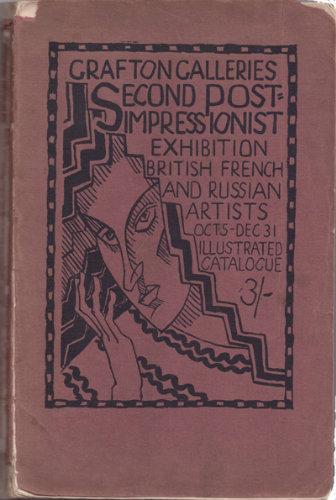
61442
Fry's Exhibition at Grafton Galleries
1912-11-15 00:00:00
1912-11-15 00:00:00
Walt Kuhn and Arthur B. Davies left Paris for London to visit an exhibition organized by Roger Fry, a British artist and critic. Fry's "Second Post-Impressionist Exhibition" was held at Grafton Galleries and featured many artists Kuhn and Davies were pursuing for their exhibition in New York.

61180
Review of Fry's Exhibition
1912-11-16 00:00:00
1912-11-16 00:00:00
Walt Kuhn wrote a two page letter to Walter Pach in which he reviewed the show at the Grafton Gallery.
He noted, "We were delighted that the Grafton show takes in from 40 to 50 ₤ sterling per day in admissions - Can't you see what is going to happen in NY? At that, they only charge a shilling a head. Our average admission will be about double that—(50 cents)."

61442
Identified Desirable Matisses and Picassos
1912-11-19 00:00:00
1912-11-19 00:00:00
As Walt Kuhn visited galleries in Paris and London he identified artists and their work for inclusion in the International Exhibition of Modern Art. Upon consulting a London catalogue, Kuhn listed items by Matisse and Picasso.
He indicated that some were "already promised" to the exhibition, whereas others were still "desired."

61180
Kuhn Letter to Pach
1912-11-19 00:00:00
1912-11-19 00:00:00
Walt Kuhn wrote a five page letter answering concerns raised by Walter Pach. Kuhn and Pach deliberated about shipping and handling of the loans they had secured from European patrons.

60935
Postcard to Vera from Paris
1912-11-19 00:00:00
1912-11-19 00:00:00
Walt Kuhn reported to Vera about his activities with Arthur B. Davies who had just arrived in Paris. Kuhn laced superlatives throughout his account.
He boasted, "We will be able to bring over the very cream of modern art.”

60935
Davies Postcard to Vera
1912-11-20 00:00:00
1912-11-20 00:00:00
Arthur B. Davies wrote a postcard to Vera Kuhn. He included a playful reference to her husband's dress and facial hair.
Davies noted, "Show is great success. K is growing a pointed mustache wearing his high [drawing of hat] cutaway [drawing of tails] spats [drawing of spats] -D"

61180
Artists Invited
1912-12-01 00:00:00
1912-12-15 00:00:00
Circular invited professional and non-professional artists to submit work for consideration for the "First International Exhibition."
They called for self-expression in any medium, including, for example, needlework or wood-carving. Signed (printed) by the president and assistant secretary of the association; Arthur B. Davies and John Mowbray-Clarke.
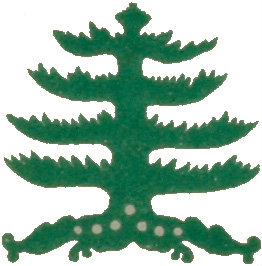
61180
Tasks Assigned
1912-12-01 00:00:00
1912-12-31 00:00:00
AAPS divided tasks among themselves. They formed committees to handle the following responsibilities: the foreign and domestic sections; reception and publicity; catalogue and general printing; and publications. They oversaw such details as: admissions, tickets, reception staff; security; hanging and art handling; printing of 50,000 catalogues, as well as cards, posters, pamphlets, buttons, and invitations; entertainment at the opening and closing; and concessions. They developed a publicity campaign that included the distribution of postcards and posters in New York and throughout urban centers in the U.S.

61442
Artist Redon Offered Advice
1912-12-01 12:37:55
1912-12-31 12:37:55
Walter Pach discussed a wide-ranging set of issues with Odilon Redon, a French artist. In his handwritten notes, Pach recorded the advice and recollections that Redon shared with him in a conversation during December 1912. Redon had 39 entries in the International Exhibition of Modern Art including oil paintings, pastels, and lithographs.
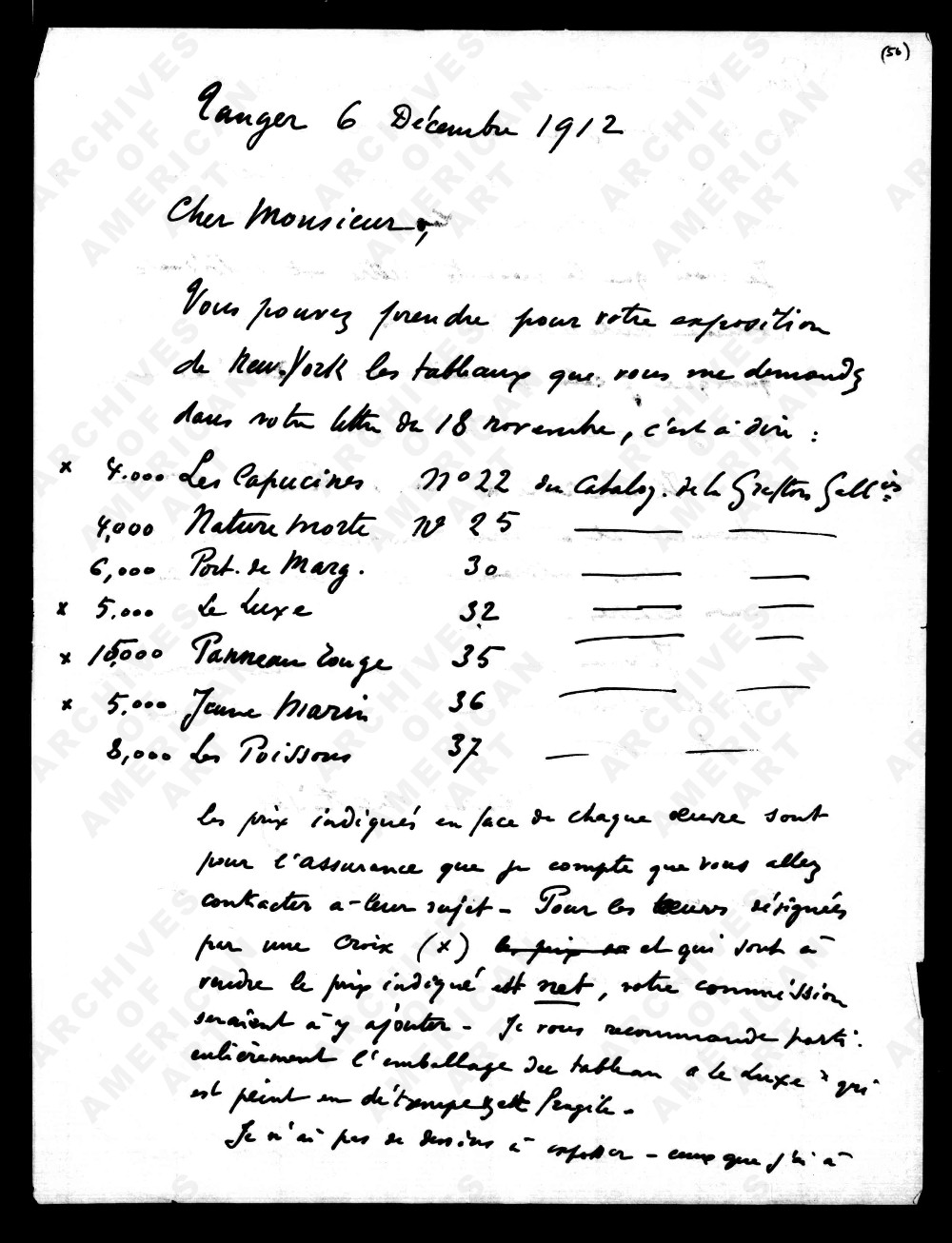
61442
Matisse Loaned Paintings
1912-12-06 00:00:00
1912-12-06 00:00:00
Henri Matisse wrote to Walter Pach about his entries for the exhibition. Matisse agreed to lend seven paintings as they discussed.
Matisse listed titles, insurance values, and indicated which were for sale; Le Luxe is fragile; no drawings were available. Matisse explained that he would urge Félix Fénéon, a Parisian art critic, to loan as many paintings as possible. Matisse had 17 pieces—including oil paintings, drawings, and sculpture—in the exhibition.

61180
Loans Negotiated
1912-12-06 12:37:55
1912-12-06 12:37:55
Walter Pach used his connections in Paris to secure important art for the exhibition. Émile Druet lent more than 100 works.
As proprietor of Galerie Druet in Paris, Druet possessed a robust collection of Post-Impressionist French paintings. He presented Walter Pach with this list of paintings that included Gaugin, Van Gogh, and Seurat.

61180
Kuhn Letter to Pach
1912-12-12 00:00:00
1912-12-12 00:00:00
Walt Kuhn discussed many planning details with Walter Pach. He anticipated that the show would be a success, financially, and critically.
This is a verbatim transcript.
Fort Lee
Dec 12
Dear Pach,
I should have written you before this but Davies and myself have been on the jump every minute since we landed. Today I gave the papers the list of European stuff which we know of definitely. It will be like a bomb shell. The first news since our arrival.
You have no idea how eager every body is about this thing and what a tremendous success it’s going to be, every-body is electrified when we quote the name etc. The outlook is great and after having figured up the likely income we stand to come out ahead of the game as far as money goes. The articles appearing from now on will increase the desire to help by the moneyed “classes” We owe you a tremendous lot for your indispensable help and advice, but you know that we are all in the same boat for this great chance to make the American think. I feel as though I had crowded an entire art education into those few weeks. Chicago has officially asked for the show, and of course we accepted.
I am very anxious to get a “thumb nail” biography of all the important men, will you see what you can get for me every little bit helps. Anything of interest. The papers are also interested in portrait-photos of the men themselves. Everything you can send me in this line will be of enormous help in securing good press notices. I have planned a press campaign to run from now right through the show, and then some. a snap shot of the Duchamp Villon brothers in their garden, for instance will help me get a special article on them. I await your story on them. Also Redon. we are going to feature Redon big (BIG!) You see the fact that he is so little known will mean still a bigger success in publicity.
John Quinn, our lawyer and biggest booster, is strong for plenty of publicity. He says the New Yorkers are worse than rubes, and must be told. All this is not to my personal taste, I’d rather stay home and work hard at my pictures showing in some of the things I have learned, but we are all in deep water now and have got to paddle. Don’t disappoint me on this. Our show must be talked about all over the U.S. before the doors open.
I hope that the letter I mailed you at Queenstown was clear to you, and that I covered everything got a letter from “Moderne Gallerie” Muenchen, stating all o.k. also one from Flechsheim Düsseldorf (Rousseau) also o.k. of course that’s all settled by this [illegible]. If you should be thrown down on any of the important things at the last minute, do not hesitate to apply to Cassimir Berlin, or Dr. G.F. Reber Barmen, Germany. Reber is in someway connected with Roseber (dealer) Paris and has some of the best Cézannes + Van G[ogh]’s in Germany. he’s sort of a semi dealer. He said that he would gladly loan of his things.
If Munch the Norwegian is willing to send and there is still time get a couple of his, insist on his most advanced ones. They could be added to [Cheurrs] shipment from London. The Norwegian show here is very very tame, and it would be fine for us to show some better Scandinavian stuff than then have. Munch (Edward. HVISTLEN Norway. I shall send you press clipping as they appear. The ball is on now and there will be lots doing.
We have a great opportunity in this show, and must try to make it truly wonderful and get all the people there, which owing to the extremely short duration of the show is very hard, and can only be done through the press. So don’t ignore my plea for minor information. it may be undignified but it brings the desired result. We want this old show of ours to mark the starting point of the new spirit in art. at least as far as American is concerned. I feel that it will show its effect even further and make the big when turn over both hemispheres. I suppose you are thinking there he goes again, but I guess its better to say “there he goes” than “doesn’t he look natural!” as Tod says.
Guy duBois is on “Art + Crafts” (off the Journal) and will devote a whole issue to the show. He’s strong I hear. Expect to see him tomorrow.
Remember me to the Duchamp Villons and all the others you may see. I shall not wait another ten years before I drop in on old Paree.
We will have an office in town a sort of information bureau. The business end of this thing is enormous. I expect to give practically all my time to it, but do it gladly if we can really do what we hope to do. Did you ever hear the story of the Russian bee keeper?
A friend looking at the hive of a Russian says, “but that hole is much too small no bee can enter that hive.” The Russian answered in his funny German
Der Bien Muss!
I have a lot of other stories, which I will save until you show up in New York.
Remember me to Mrs. Smythe. Too bad we miss connections in London.
Talking about London, it has about as much modern art as Paducah Ky but I tell you I’d like to board in the British Museum for about a year, I sure went batty on that antique glass and the Assyrian lion hunt. (sculpture) ___
Had supper in Child’s tonight
Oh you Laperouse!
I think I’ve covered about all there is on hand—and hope everything will work out o.k. We saw Austin Baldwin and they assure us that there will be no hitch. I expect to see Secretary MacVeigh of the treasury in a week or so, so as clinch matters and get over some of the red tape.
Send me photos of your pictures.
don’t forget.
Good luck and
Best wishes
Yours in peace
And war
Walt Kuhn
Fort Lee is the best address for packages.
(over! important!)
Artz + deBois have very fine color reproductions of Van G[ogh] and other Redon too. I believe. Davies and I are very anxious to have them on sale. I have written to Mr. de Bois about this, and you might stir him up a little. The same terms as we made with Drouet would be o.k.
Another thing
I have heard from several dealers regarding advertising space in our catalogues. Bernheim Vollard etc. might feel slighted if they were not given the opportunity to insert their ad. Speak to them about it. They can and should immediately send their copy—I will have rate in a day or so which I will send on to you. Their acceptance could be sent by cable, but their copy should be mailed immediately so as to have it ready weather they accept or not. Subject to final cable. There will be two catalogues—the cheap one without illustrations—and the de Luxe will be a #1. and contain only a few high class ad’s perhaps nothing but dealers. I shall send both rate.
Make it plain that they are under no obligation to go into this. The rates will be moderate and the job will be handled by a first class advertising concern—only first class matter.
K.
Also send more information
about Brancusi
Just read your long letter
Addressed to MacBeth Great!

62110
Duchamp-Villon Bros. Used in Publicity
1912-12-12 12:00:00
1912-12-12 12:00:00
Marcel Duchamp and his brothers Jacques Villon and Raymond Villon-Duchamp posed with Villon's dog, Pipe, in Villon's studio's garden in Puteaux, France.
Kuhn instructed Pach to help with publicity. He focused on these brothers, and proposed to use this particular photograph in the campaign.
"I am very anxious to get a “thumb nail” biography of all the important men, will you see what you can get for me every little bit helps. Anything of interest. The papers are also interested in portrait-photos of the men themselves. Everything you can send me in this line will be of enormous help in securing good press notices. I have planned a press campaign to run from now right through the show, and then some. a snap shot of the Duchamp Villon brothers in their garden, for instance will help me get a special article on them. I await your story on them," Kuhn requested in a letter dated December 12.

60935
Letter to Vera from New York
1912-12-14 00:00:00
1912-12-14 00:00:00
Walt Kuhn cultivated a savvy public relations campaign to promote the show. In this letter, he conveyed his great optimism and described the pine tree emblem that they used on stationery, catalogues, posters, and campaign buttons.
This is a verbatim transcript of this letter: [Dec. 14, 1912]
122 East 25 St. phone 7628 Madison
If you should have occasion to write to this address, be sure to mark it PERSONAL.
Dear Chick
Every thing going gloriously—
The Sun + Herald came out today as enclosed—We gave an interview to Swift of the Sun for a Sunday article to appear about the first week in Jan. Davies insists that I give all the interviews after this-Young du Bois was in today and tells me all the writers are crazy for stuff—Expect to be busy all day Monday giving interviews. Our list of European stuff stupefies every body—I am simply in heaven with delight at the coming certain success. This show will be the greatest modern show ever given anywhere on earth, as far as regards high standard of merit. So far I have only seen Myers and Taylor. Every body is loyal and willing to leave it in the hands of Davies and W.K.Clark is like a faithful dog, but very slow and draggy, however I shall shake him up—The loyalty of the men is almost touching—The meeting next Tuesday will be O.K. We have decided to have booze and lunch for the boys, tell them what has been done, and what is to be done and let it go at that. Give them a good time and not have any formal meeting at all. if G.B. gets gay the bunch is loaded to bull-moose him likewise the same with some other people we know—I expect no trouble—Have already done a raft of work, had the office telephone put in in 3 days—it’s an enormous help—Noa-Noa type written also v.g. letters. closed deal with man to handle advertising in catalogue. We expect to realize about $2000 on that. We have adopted an emblem—
[sketches]
Taken from the old pine tree flag of the revolution—
I got the idea one morning in bed—Davies made the drawing and we'll have it on station[e]ry, catalogues, posters and everywhere—We are also going to have campaign buttons—here is the design = =
It will be about this size [sketches]
and very neat
We are going to get them by the thousands—give them to every body—from bums to preachers—art students—bartenders—conductors etc. ought to make an immense hit—and get everybody asking questions. This button business is a secret, and will have to be pulled off on the quiet, as some of the fellows might kick—after they are out it's no use to kick—Going to send buttons & posters to
Prendergast—Boston
Lamb—Washington
Schamberg —Phila etc—
I have convinced Davies that owing to the short time of the show, one month, we must advertise may also advertise in the street cars—He's right with me and tickled to death—I'm absolute boss in the office—will not touch comics unless they're a cinch—Davies keeps me supplied with petty cash, and we can easily stick it out over the show. Have only been home one day since you left, except at night-consequently our phone is not in yet—Cannot think of taking a day off until I get Clark and Taylor well broken in—I never realized that Davies and I are the only ones who know the ropes—The others are helpless. By the time you get back I'll be able to get off more—Looks as though I will get down to Wash O.K. for Xmas. Hope I get a clever stenographer on monday—Have already looked around—Davies and I will be the only two men known as authorities in America on modern art. When this show is over—Pach deserves a lot of credit, and I shall see that he gets it too—They all say that D and I were the lucky combination—pardon my immodesty but you've said that yourself
Love—more later—
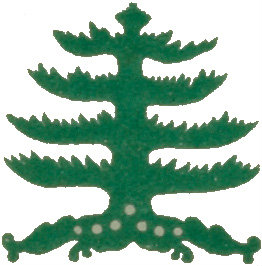
62110
Artist Dawson Anticipated Show
1912-12-16 00:00:00
1912-12-16 00:00:00
Manierre Dawson, a Chicago-based artist, learned of plans for the exhibition. As he eagerly recorded observations in his diary, he noted that Arthur B. Davies had invited him "to send some of my things, what I consider the most novel, to him."
Dawson continued, "He has promoted and gathered a great show to be presented this winter by the Association of American Painters and Sculptors. What can I send? My 'Three Graces' is like a Pompeiian wall painting. The other large paintings are too much like what I've read about in the "Manchester Guardian." All my good stuff is at "The [illegible]." What I have here are small paintings that would be lost in the assemblage Davies intends. The string of paintings I am working on is of middle sized paintings but very non-objective. The subjective themes are working out beautifully, but I can't send unfinished, unframed pictures. I will have to select from among these to decide what to finish and then make boxes. Where am I going to get time?
Thank goodness for Christmas vacation days, four of them. These Sunday works begun in November after I had finished 'Figures in Action,' a dozen or so are incomplete, unframed, no boxes made. The show, I believe, is to be in February. I think I can stand working evenings till midnight. Strange by night painted colors seem beautifully bright in the daytime.
Bennett has just sent me a newspaper clipping which announces the "Amory Show." The paper mentioned several names unknown to me mostly French. I recall talk at Miss Stein's. The name Matisse sounds familiar and I think that Picasso was in the talk too. With all the great quantity the promoters would not particularly want me from way out here in Chicago.
It seems all my time is take to stretch canvas, run downtown, to buy paint, copy sketches, it seems a desparate time, but if I can finish that string of pictures, they are bound to come out sometime. I have written to Davies."

62110
Kuhn Recruited Cleveland Artist
1912-12-20 00:00:00
1912-12-20 00:00:00
As AAPS secretary, Walt Kuhn juggled responsibilities, and, occasionally, smoothed hurt feelings.
Kuhn replied to Henry G. Keller, an artist in Cleveland who had earlier inquired about his chances with the jury. Kuhn wrote,"I seemed to have hurt your feelings in someway or another—It's a puzzle to me. I have never had any intention of doing such a thing—forget it—"
Kuhn encouraged him to send along his materials especially because Keller claimed to be influenced by Cézanne. Kuhn also sought assistance from Keller, asking him to advertise the show in Cleveland with window posters. Kuhn promised, "This is Americas' great opportunity and an absolutely unselfish matter—The success will be enormous." Keller circulated publicity materials in Cleveland. Two of Keller's oil paintings were included in the exhibition.
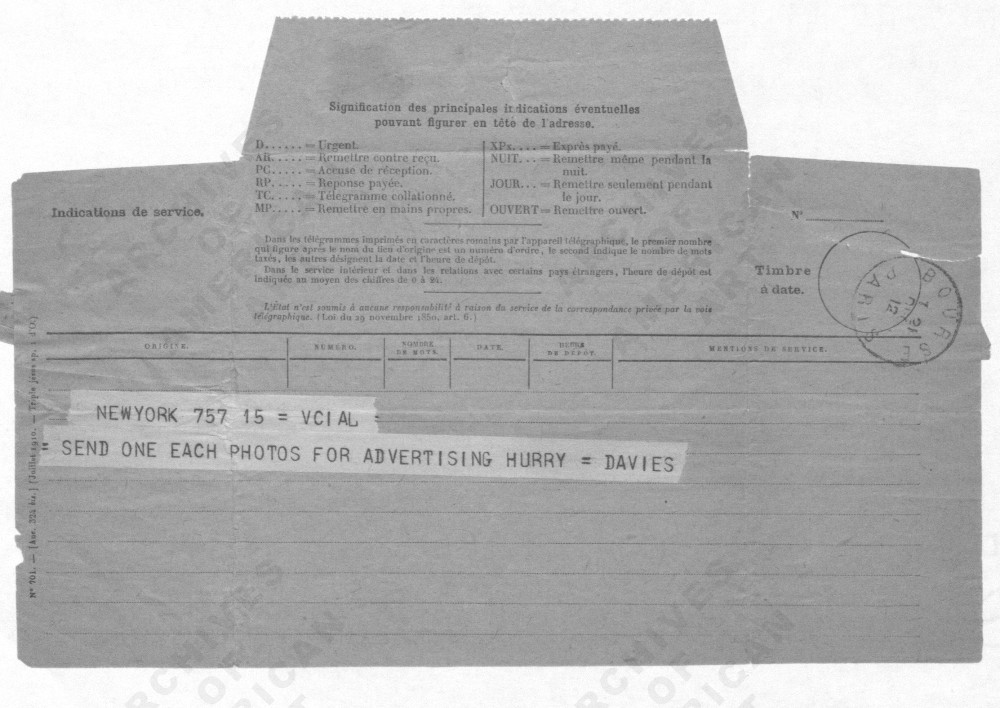
61180
Publicity Preparations
1912-12-21 00:00:00
1912-12-21 00:00:00
Arthur B. Davies telegrammed Walter Pach in Paris for photographs to use in advertising.

61180
Artist Freeman Asked to Join
1912-12-24 15:00:00
1912-12-24 15:00:00
As artists learned about AAPS, they wrote to Walt Kuhn and Arthur B. Davies for further information about how to participate.
New Jersey-based Charles Freeman wrote to Kuhn with two inquiries. He wanted to join and to submit work for the exhibition. Kuhn replied that the membership list had been "indefinitely closed" and referred him to the Domestic Art Committee. Freeman's work was not included in the exhibition.

61180
Artist Bluemner Asked to Join
1913-01-02 00:00:00
1913-01-02 00:00:00
In a letter to Walt Kuhn, artist Oscar Bluemner pledged his support and offered one of his oil paintings, a landscape, for inclusion in the show. Like Bluemner, many uninvited artists requested such consideration.
He submitted work to the Domestic Art Committee. Bluemner exhibited three watercolors and two oils paintings at the show.

61180
Memo Urged Action
1913-01-04 00:00:00
1913-01-04 00:00:00
AAPS wrote to participating artists to express the hope that the "home exhibit" will be "equally conspicuous" as the foreign portion.

61441
First Shipment of Art Arrived
1913-01-12 00:00:00
1913-01-12 00:00:00
Walt Kuhn telegrammed Walter Pach in Paris about recent shipments of art.
"Mexico delayed due tuesday next redon received."
This cryptic note indicated that the first shipment of art, due to arrive in New York aboard the S.S. Mexico on January 6, was delayed until January 12.
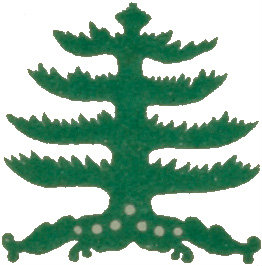
61441
Art Stored for Show
1913-01-13 00:00:00
1913-02-13 00:00:00
In January, AAPS received the loans that they had skillfully negotiated. Unable to store paintings and sculpture in the 69th Armory, AAPS rented additional accommodations.
“An entire uptown building was leased to temporarily house the works,” according to Kuhn's account, The Story of the Armory Show (1938).
Later, in Milton Brown's history of the Armory Show, he noted, "AAPS rented larger office quarters, a store in the Camera Building in which they had the small office, and a stable to store art at 28 East 32nd Street. The latter was set up immediately to receive the works as they arrived."

61182
Philadelphia Press Inquired
1913-01-13 12:00:00
1913-02-10 00:00:00
Francis Ziegler, art editor for Philadelphia Record, corresponded with Arthur B. Davies and Walt Kuhn. Ziegler inquired about a press viewing and illustrations for an article he was preparing.
"I am rather more interested in the extremists than in the conservatives and I should like to obtain six or seven photographs of typical examples," Ziegler explained.

61441
Art Inventoried
1913-01-16 19:00:00
1913-01-16 19:00:00
Each painting and sculpture was registered on an entry card. This card contained information for Marcel Duchamp's "Nu descendant un escalier" / "Nude descending a staircase," perhaps the most famous painting the exhibition.
The cards, in French (pictured here) or German, contained blank spaces for title, artist, artist's residence, owner, date of piece, sale and insurance prices, value of frame, and pick-up and delivery sites.

61180
Domestic Art Vetted
1913-01-18 00:00:00
1913-01-18 00:00:00
This notebook contains a record of U.S.-based artists who submitted pieces to the exhibition.
Pasted inside the front cover is a typewritten memorandum from the Domestic Art Committee to artists who supplied their work for consideration. AAPS planned to exhibit by invitation only, but overwhelmed by demand, they formed a committee to select work. The volume is organized alphabetically by artist, for each work the title and price are listed, as well, as an "A" for accepted or "R" for rejected.

61180
AAPS Convened
1913-01-22 00:00:00
1913-01-22 00:00:00
AAPS met to vote on three curatorial decisions for the exhibition.
They approved a policy, set forth by Davies, that "the selection of painting and sculpture be approved by the members." They approved "the plan of arrangement and distribution of works." And, they decided that "the hanging of pictures and arranging of sculpture to be done by groups of men under the supervision of section bosses whose arrangements [were] in turn subject to the approval of the president."

61180
Lawyer Petitioned Government
1913-01-30 00:00:00
1913-01-30 00:00:00
Attorney John Quinn prepared a legal brief in which he argued that the federal government should lift duties on imported art.

61441
Rent Paid
1913-01-31 00:00:00
1913-01-31 00:00:00
Arthur B. Davies issued a $4000 check, the balance of the rent, to lease the 69th Regiment Armory.

61182
U.S. President Invited
1913-01-31 12:37:55
1913-01-31 12:37:55
Arthur B. Davies wrote to the White House and invited the President to attend the International Exhibition of Modern Art.
"For this will be the first time in the history of the United States that the modern movement in art from the from the period of Impressionism down to our time has been shown by an exhibition in any way adequate or comprehensive," Davies proclaimed.
Charles D. Hilles, Secretary to the President [Taft] declined the invitation four days later.

61180
Borglum Resigned His "Farcical Position"
1913-02-01 00:00:00
1913-02-01 00:00:00
Gutzon Borglum, a sculptor, resigned his position as AAPS Vice President in a lengthy, single-spaced letter. He raised concerns about AAPS's positions and procedures.
"[...] I cannot consider these things lightly. This may be a colour orgie, 'getting the best of the Academy' !!. 'putting one over'—whom? It ought to be a great, large-spirited movement, bulwarked by sincerity and unselfishness, or else it is a fake and a masquerade. We have led the public to expect something and we are fooling them; we are deceiving them; we have got their interest on false pretences.
Sculpture as it genuinely exists in America will not be shown, because it has not had a chance—not a fair chance," he charged.

61180
Stieglitz Represented Artists
1913-02-04 00:00:00
1913-02-04 00:00:00
Alfred Stieglitz, a photographer and AAPS member, wrote to Walt Kuhn about artwork for the exhibition.
He emphasized that "under no circumstances" was the work of John Marin and A[braham] Walkowitz to be sent to Chicago.

61180
AAPS Denied Borglum's Charges
1913-02-06 00:00:00
1913-02-06 00:00:00
Walt Kuhn and Arthur B. Davies denounced Gutzon Borglum's claims about AAPS. They directly addressed four major accusations. They closed the letter,
"[...] Above all we denounce and condemn the absurd charge, that there has been abuse and misuse of public confidence. The work of our Association in organizing this great exhibition of modern art will speak for itself. By that we will be judged. Your excitement and hurt vanity cannot change that verdict.
For the rest, we are too much engrossed in putting together the finishing touches on our part of the work to waste time in controversy with one who seems to prefer to rush to the papers with his fancied grievances instead of conferring in an orderly manner with his colleagues."
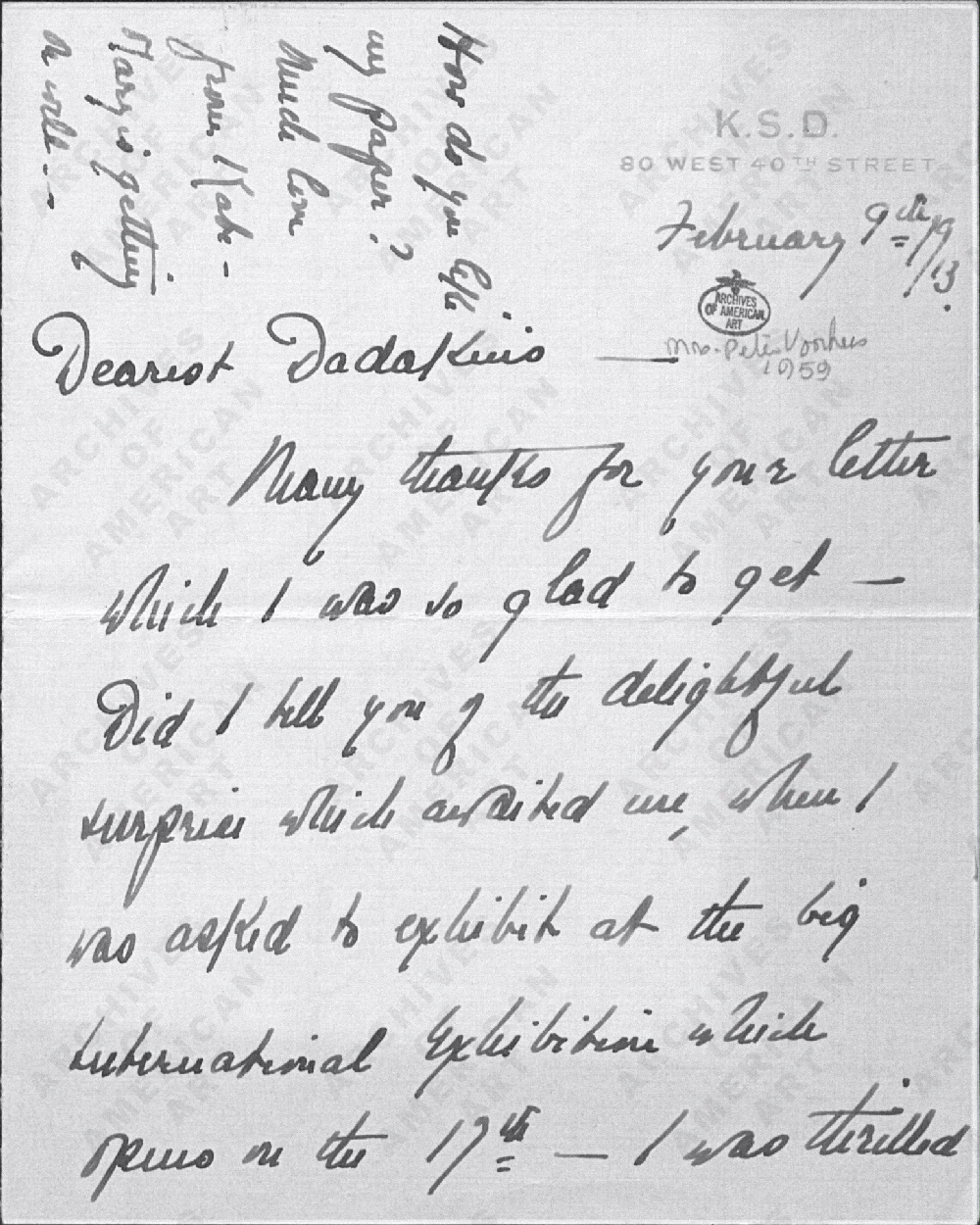
62110
Artist Drier Pleased to be Included
1913-02-09 00:00:00
1913-02-09 00:00:00
Painter Katherine Dreier shared news with her sister Dorothea A. Drier that she had been invited to participate in the exhibition.
"Did I tell you of the delightful surprise which awaited me, where I was asked to exhibit at the big International Exhibition which opens on the 17th-I was thrilled to think that Mr. Arthur Davies liked my work sufficiently to invite me."

61182
NY Governor Sulzer Invited
1913-02-11 00:00:00
1913-02-11 00:00:00
Arthur B. Davies invited the governor of New York to attend the opening of the exhibition.
"I should like to impress upon you the importance of the occasion and the great influence that this exhibition is bound to have on art in America," Davies boasted.

61441
Armory Divided into Galleries
1913-02-13 00:00:00
1913-02-13 00:00:00
Organizers subdivided the Armory's interior space into separate rooms.
Gallery A: American Sculpture and Decorative Art
Gallery B: American Paintings and Sculpture
Gallery C: American Paintings
Gallery D: American Paintings
Gallery E: American Paintings
Gallery F: American Paintings
Gallery G: English, Irish, and German Paintings and Drawings
Gallery H: French Paintings and Sculpture
Gallery I: French Paintings and Sculpture
Gallery J: French Paintings, Water Colors, and Drawings
Gallery K: French and American Water Colors, Drawings, etc.
Gallery L: American Water Colors, Drawings, etc.
Gallery M: American Paintings
Gallery N: American Paintings and Sculpture
Gallery O: French Paintings
Gallery P: French, English, Dutch, and American Paintings
Gallery Q: French Paintings
Gallery R: French, English, and Swiss Paintings

61441
Art Installed and Armory Decorated
1913-02-13 10:30:00
1913-02-14 00:00:00
Organizers erected 18 temporary galleries and installed approximately 1,200 works of art in two days.
They also decorated with greenery and bunting, purchased with a $1,000 donation from Gertrude Vanderbilt Whitney.

61182
German Counsel Invited
1913-02-14 12:37:55
1913-02-14 12:37:55
AAPS received a letter of thanks from Dr. Falcke, Imperial German Consul General in New York for the invitation to attend the opening.

61182
Press Previewed Exhibition
1913-02-16 19:30:55
1913-02-16 19:30:55
AAPS invited the press to attend an opening of the exhibition on Sunday afternoon.

61441
Show Opened Formally
1913-02-17 15:00:00
1913-02-17 15:00:00
AAPS hosted a formal opening to the exhibition on Monday afternoon from 3 to 7 p.m.
Thereafter, the exhibition opened from 10 a.m. to 10 p.m. Monday– Saturday, and from 2 p.m. to 10 p.m. on Sundays. Admission was 25 cents except for weekday mornings until noon, when the entry fee was $1.
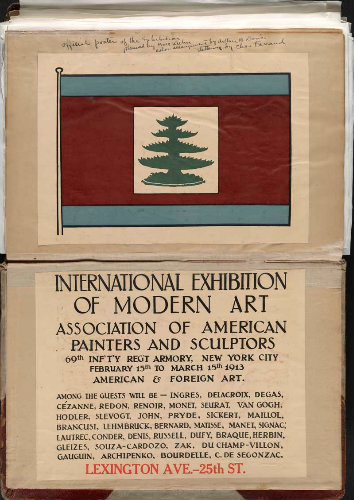
61182
Posters Included in Campaign
1913-02-17 16:00:00
1913-03-15 16:00:00
AAPS designed posters to promote the International Exhibition of Modern Art.
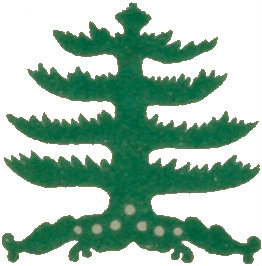
61182
Press Responded
1913-02-17 18:00:55
1913-02-17 18:00:55
New York Tribune published items on page 7 with the headline: "The "ISM" Exhibition: Painting and Sculpture at the 69th Regiment Armory Independence in Art A Remarkable Affair, Despite Some Freakish Absurdities."

61182
Souvenir Postcards Sold
1913-02-17 22:00:00
1913-03-15 22:00:00
AAPS issued 57 different postcards with halftone reproductions of art displayed at the exhibition. The cards, available for purchase at the show, featured artists like Marcel Duchamp. They sold thousands of copies.
The cards served at least two functions: they were both souvenirs and publicity. Many visitors carried their cards home with them and in so doing shared the work with others, many of whom did not attend in person. Some, including librarians and art enthusiasts, wrote to AAPS to supplement their collection of Armory Show art cards.
The graphic design of the card greatly resembled those circulated at the Sonderbund Exhibition of 1912 in Cologne.

61441
Exhibition Space Organized
1913-02-17 22:00:00
1913-02-17 22:00:00
This rare photo depicts the interior of the 69th Regiment Armory, with sculptures and paintings installed for the International Exhibition of Modern Art.

61441
Architectural Façade Displayed
1913-02-18 00:00:00
1913-03-15 00:00:00
In addition to paintings and sculpture, the exhibition included a model by Raymond Duchamp-Villon, Façade of a City Residence.
Walter Pach authored a 21-page brochure entitled A Sculptor's Architecture in which he explained Duchamp-Villon's model and the aims of modern building programs. In his didactic essay, Pach urged readers to consider, if not accept, new styles of architectural design. He concluded by predicting that modern architecture would be responsive to the needs of America.

61182
Memoribilia and Souvenirs Distributed
1913-02-18 15:00:00
1913-03-15 15:00:00
Organizers designed buttons and lapel pins to promote the exhibition. They represent one tangible facet of the publicity campaign that Walt Kuhn developed.
The image included a pine tree logo that Kuhn referenced in correspondence with Vera Kuhn.
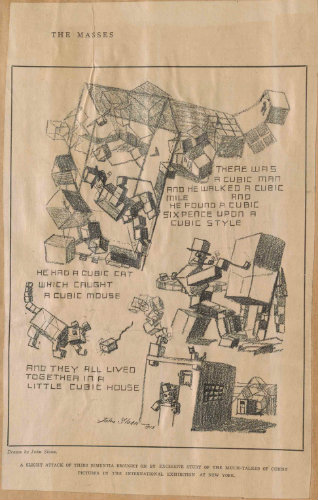
61182
Artist Sloan Mocked Cubism in Cartoon
1913-02-19 00:00:00
1913-02-19 00:00:00
John Sloan, a member of AAPS and a participant in the exhibition, published a cartoon lampooning Cubism in the radical journal, The Masses where he also served as Art Editor.
Sloan's comic featured a figure bedecked in boxes with a hat and pipe in action. The accompanying ditty jeered, "There was a cubic man and he walked a cubic mile and found a cubic six pence upon a cubic style. He had a cubic cat which caught a cubic mouse and they all lived together in a little cubic house."
Sloan exhibited two oil paintings and four etchings at the show.

61441
Inside the Exhibition Space
1913-02-19 00:00:00
1913-02-19 00:00:00
Gallery A included American Sculpture and Decorative Art.
Organizers outfitted the armory with "walls, coverings, booths, tables and seats for the weary" (pictured on the left and right of the image).
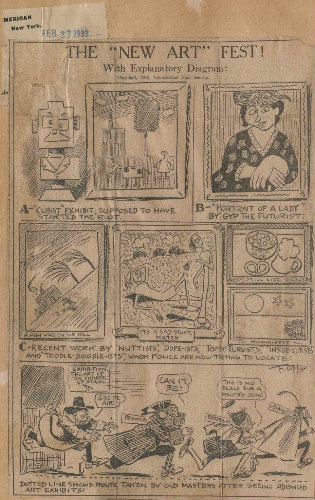
61182
Cartoon Proclaimed "New Art" Fest!
1913-02-27 00:00:00
1913-02-27 00:00:00
International News Service published Frederick Opper's cartoon that purported to explain art from exhibition in four panels.
"A-'Cubist' Exhibit, supposed to have started the riot., B-'Portrait of a Lady by Gyp the Futurist, C-Recent work by ‘nuttists,’ ‘dope-ists,’ topsy-turvists,’ ‘inside-outists’ and ‘toodle-doodle-ists,’ whom police are now trying to locate and D-dotted line shows route taken by Old Masters after seeing advanced art exhibits"

61441
Conley Requested Passes
1913-03-03 00:00:00
1913-03-03 00:00:00
Col. Louis D. Conley of the 69th Regiment Armory obtained 200 passes to the exhibition for use by officers and non-commissioned officers.

62110
Duchamp's "Nude" Sold
1913-03-05 00:00:00
1913-03-05 00:00:00
Marcel Duchamp's "Nu descendant un escalier / Nude figure descending a staircase" sold to Frederick C. Torrey for $324.00 according to Walter Pach's sales records.

61182
T. Roosevelt Viewed Show
1913-03-05 00:00:00
1913-03-05 00:00:00
Former President Theodore Roosevelt visited the exhibition on the day of the presidential inauguration of Woodrow Wilson. Arthur B. Davies, Walt Kuhn, Bob Chanler, and Frederick Gregg showed him through the galleries. Arthur B. Davies drafted this note and followed up with Roosevelt.
Davies explained the reason for his correspondence, "All this is prompted by the conversation we had yesterday when you honored us with your presence."
Roosevelt published a review of the show as “A Layman’s View of an Art Exhibition,” in Outlook on March 29, 1913.

61180
Celebratory Banquet Held
1913-03-08 18:00:55
1913-03-08 18:00:55
AAPS hosted a beefsteak dinner at Healy's, 66th Street and Columbus Avenue. Diners, typically men only, ate beef tenderloin with their hands. They also wore aprons or smocks.
According to a handwritten note on this photograph by Percy Rainford: "Individuals identified: seated at table in front: William B. McCormick (press), Allen Tucker, James B. Townsend (Art news), Roy McCardle, ?, [illegible]. Second row: Jo Davidson, Joel E. Spingarn, Bryson Boroughs, Jerome Myers, [?] Robertson, George Bellows, Mahonri Young, Henry McBride, George B. Luks. Back row left to right: Walt Kuhn, Frederick Gregg, Arthur B, Davies, John Quinn, Walter Pach, Stephen Clarke, Royal Cortizos, Alfred Stieglitz, Edward A. Kramer, D. Putnam Brinley, [?] Boswell, [Arthur] Hoeber, [?] Dion, Frank Nankivell, [?] Moger [or Moyer?], ?, [?] Lawson, Thomas Ashwell, Guy Pène duBois, J. Nilsen Laurvik, Robert Henri, John Sloan."

61180
Dinner Guests Included Prominent Men
1913-03-08 19:00:00
1913-03-08 19:00:00
AAPS celebrated the exhibition with a traditional beefsteak dinner.
As noted in the mast of the program/menu, the AAPS courted "The Friends and Enemies of the Press" during the meal. Guests signed the menu.
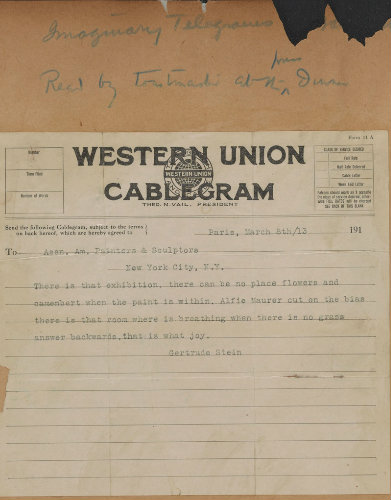
61180
Satirical Messages Delivered at Dinner
1913-03-08 20:00:00
1913-03-08 20:00:00
Organizers of the Beefsteak Dinner composed imaginary telegrams that were read aloud.
The hosts parodied Gertrude Stein, a prominent poet and art collector. One assumed her voice and proclaimed, "There is that exhibition. there can be no place found flowers and camenbert. when the paint is within. Alfie Maurer cut on the bias there is that room where is breathing when there is no grass answer backwards. that is what joy.
-Gertrude Stein"
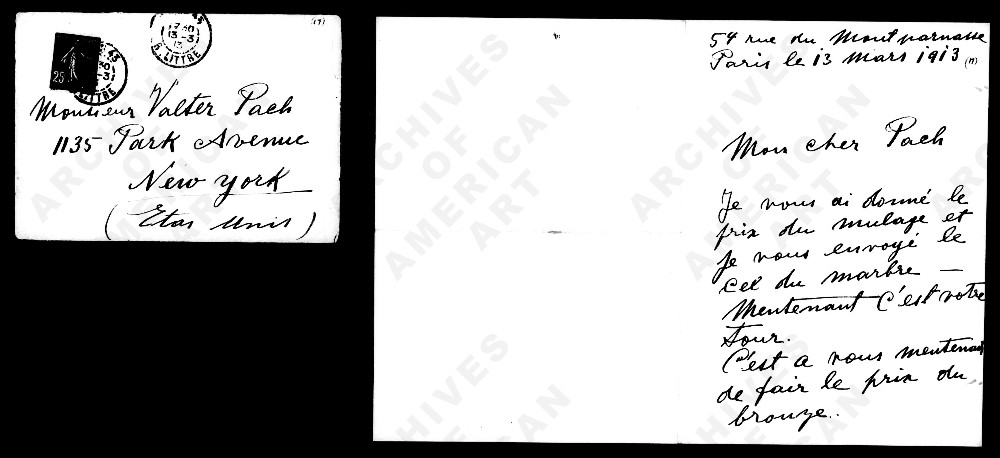
62110
Artist Brancusi Praised Show
1913-03-13 00:00:00
1913-03-13 00:00:00
Constantin Brancusi wrote to Walter Pach about the price for a bronze statue (probably Mademoiselle Pogany). He concluded the letter with an enthusiastic endorsement of the show.
"I applaud with all heart the incredible success of the exhibition-and I am happy that a good beginning is taking place. You and the others deserve the credit for such a magnificent step upward," commented Brancusi.
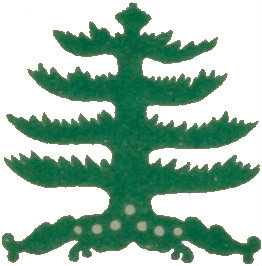
61180
Art Secured for Chicago and Boston Venues
1913-03-13 00:00:00
1913-05-28 00:00:00
Walt Kuhn secured loans from patrons who purchased pieces at the New York show. He asked to send the paintings and sculpture along to the exhibitions in Chicago and Boston.

61182
Postcards Requested
1913-03-13 12:37:55
1913-03-13 12:37:55
Organizers of the exhibition fielded inquiries from around the U.S. Elisa May Willard, a reference librarian at Carnegie Library of Pittsburgh, wrote for postcard reproductions of Cubist pieces in the exhibition.
As she explained, "I have the 'Nude coming downstairs' and would like as many others as possible."

61441
Critic Fitzgerald Prepared for Boston
1913-03-14 12:37:55
1913-03-14 12:37:55
Desmond Fitzgerald, patron, collector, and critic, recorded his visit to the New York exhibition in his daily diary. Fitzgerald noted, "Quite a strenuous day."
In an entry entitled, "Cubists Ex. in N.Y." Fitzgerald recounted the events of his day, "To Ex. at cor. of 25th St. + Lexington Ave. Met Tom Allen + arranged with Mr. Kuhn to send it to Boston. We lunched at Waldorf and after engaging my berth to the great Ex. of over 1200 pictures. Cubists, post impressionists + impressionists Very instructive."

62110
Artist Dasburg's Impressions
1913-03-15 00:00:00
1913-03-15 00:00:00
Andrew Dasburg, a painter and sculptor, wrote to his wife, Grace Mott Johnson, a sculptor. Dasburg, one the younger exhibitors, served as a volunteer docent. He composed this postcard on the last day of the show in New York.
"I feel that I have had about enough exhibit for a while. Too much of anything tends to lessen interest and so it is becoming with me here at the show. I find myself becoming more interested in the people than in the pictures," he confided.
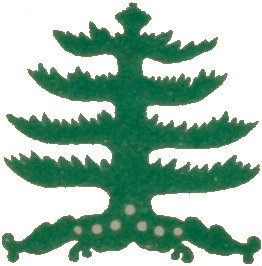
62110
Anticipation for Chicago Show Built
1913-03-16 00:00:00
1913-03-16 00:00:00
Artist Manierre Dawson awaited the exhibition at the Art Institute.
"The Armory Show will be here in Chicago next week," he noted in his diary.

62110
Artist Mora's Impression
1913-03-17 00:00:00
1913-03-17 00:00:00
Artist F. Luis Mora reacted to the commercial nature of the exhibition in a small pocket diary.
"It was the purple hippopotamus in the rear tent that attracted the crowd at the 69th regiment Armory Show. That they call a successful art event. It was art—art in advertising," he observed.

61441
Exhibition Closed in NY
1913-03-17 22:00:00
1913-03-17 22:00:00
International Exhibition of Modern Art closed in New York City.
“When the doors closed . . . there was a jubilant celebration with members and guests, guards, ticket sellers, guides, and members of the 69th Regiment, who had come to the closing, all participating. An impromptu snake dance led by the regimental fife-and-drum corps got underway with Putnam Brinley, his lanky height topped by a bearskin hat, acting as drum major; and, as it swept through each of the galleries in turn amid songs, shouts, and buoyant laughter, the participants saluted the artists past and present that had made it possible,” according to Milton Brown's history of the Armory Show.
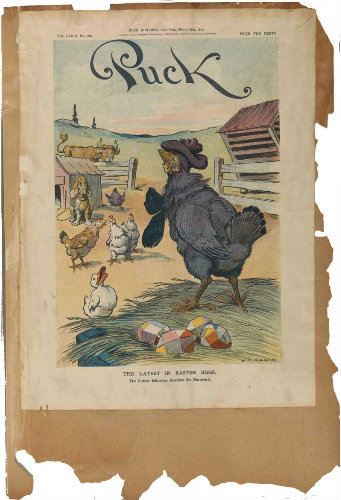
61182
Cartoon Spoofed Cubism
1913-03-19 00:00:00
1913-03-19 00:00:00
Louis M. Glackens published a color cartoon in Puck magazine that poked fun at the exhibition.
Amid a pen of hens, a dog, a duck and a cow, a chicken laid brightly colored eggs. The caption explained, "The Latest in Easter Eggs: The Cubist Influences Reaches the Barnyard."
L.M. Glackens, the cartoonist, was the brother of William Glackens, member of AAPS and chairman of the selection committee for the exhibition. William Glackens exhibited three oil paintings at the exhibition.
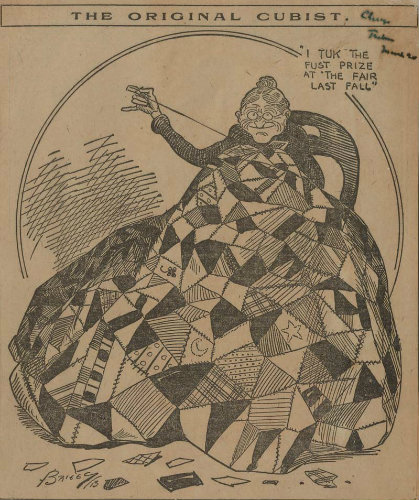
61182
"Original" Cubist Identified in Cartoon
1913-03-20 12:37:55
1913-03-20 12:37:55
Cartoonist Briggy identified an antecedent to Cubist art: the crazy quilt.
An elderly woman stitched together scraps of fabric and proclaimed, "I tuk the fus prize at the fair last fall" in the one pane comic published in the Chicago Tribune.

61180
AAPS Lost Two Umbrellas
1913-03-20 12:37:55
1913-03-20 12:37:55
Organizers handled an array of responsibilities, large and small. A visitor griped about two lost umbrellas.
"When I complained to you last Saturday afternoon about the mix-up of the umbrella-checks by those in charge of the men's department which resulted in the loss of my two umbrellas/one lady's silk with silver handle, worth 5.00 or more and mine plain handle, half-silk, value 2.50) you assured me that I would positively hear from you by Monday following. It is already Thursday + I am greatly inconvenienced inasmuch as the lady has asked to make good for her loss," wrote Rabbi Gabriel Schulman.

62110
Artist Pepper's Impression
1913-03-22 00:00:00
1913-03-22 00:00:00
Artist Charles Hovey Pepper wrote to Robert W. Macbeth and invoked explosive imagery. Repeatedly throughout the records, correspondence, and press observers used words like dynamite, explosion, and bomb to describe the sensational qualities of the show.
"We hear that we are to have the good fortune of having the Post Impressionist bomb explode under dead old Boston. Joy Joy," he drolly noted.

60935
Mexican Critic Requested Photographs
1913-03-22 12:37:55
1913-03-22 12:37:55
L. Lara Prado of Mexico City-based Cosmos Magazine, wrote to Arthur B. Davies. She explained that she visited the exhibition several times and requested photographs for an article she was writing.

60935
Postcard to Vera from Chicago
1913-03-22 22:30:00
1913-03-22 22:30:00
Walt Kuhn wrote to a terse note upon his arrival in Chicago.
"Arrived 10:30 tonight—met by Gregg Everything in good shape—Expect great success—more later. W."

62110
Artist Miller Assessed Influence
1913-03-23 00:00:00
1913-03-23 00:00:00
Kenneth Hayes Miller shared his enthusiasm for the show with his student Rockwell Kent.
Miller observed that the show "had a broadening influence and accomplished in a few weeks what in the ordinary course would have taken many years. It was like setting off a blast of dynamite in a cramped place-it blew everything wide open. I feel that art can really be free here now."
Miller exhibited four paintings in the show.

61180
Art Purchased
1913-03-23 22:00:00
1913-03-23 22:00:00
Walter Pach's notebook included detailed sales records from the exhibition.

61180
"What are Cubists?" Wondered Reviewer
1913-03-24 00:00:00
1913-03-24 00:00:00
Mildred Morris of Denver Republican published a review.
The headline queried, “What are Cubists? New World Puzzle / Yes, They’re Artists---No, Not From Cuba.”

61441
Opened in Chicago
1913-03-24 00:00:00
1913-04-16 00:00:00
International Exhibition of Modern Art was sent to the Art Institute of Chicago. It attracted 1,802 visitors on opening day according to Harriet Monroe writing in Chicago Daily Tribune.
Exhibition organizers hung the show in one day in the Art Institute of Chicago. Gregg, Pach, and Kuhn were assisted by the employees of the Art Institute. American artists Robert W. Chanler traveled from New York to install the colorful decorative screens used in the 69th Armory, according to a statement by Frederick Gregg in his pamphlet For and Against.

61180
Art Purchased
1913-03-24 12:37:55
1913-03-24 12:37:55
Walter Pach's notebook included detailed sales records from the exhibition.
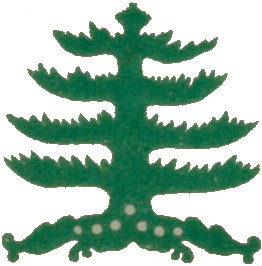
62110
Artist Recorded Impressions
1913-03-25 12:37:55
1913-03-25 12:37:55
Artist Manierre Dawson attended the exhibition and met Walter Pach.
"The Armory Show opened yesterday at the Art Institute. Today I have had a good look. I stayed long and looked and looked. It was with great difficulty that on coming out I could convince myself that I hadn't been thru a dream.
The man with the moustache and tremulous hands who seemed in constant attendance saw me as the most lingering of the spectators. Engaging me in conversation I found him most interesting and informative. His name is Walter Pach. I asked him about prices and was amazed to find how low prices are, except of course the Cézanne and the paintings of one or two others now dead. He says he is a close friend of Arthur Davies and on hearing my name said that Davies had told him to be sure to look me up. I have invited Pach to come to our house tomorrow to dinner. I want to show him my things," noted Dawson.
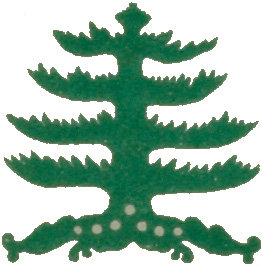
61182
"Artist Starts Revolt"
1913-03-26 00:00:00
1913-03-26 00:00:00
Accounts in The Chicago Tribune suggested the controversy that surrounded the show at the Art Institute of Chicago.
The headline roared, "CHICAGO ARTIST STARTS REVOLT: Charles Francis Brown Opens Fire on Futurists; Doubts Sincerity. VIEWS WIN APPLAUSE. Public Crowds Hall to Hear Attack; Then Throngs Galleries."
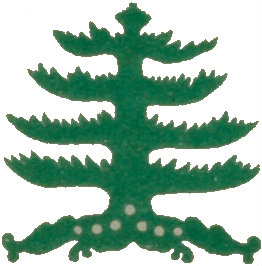
62110
Artist Dawson Excited by Show
1913-03-27 12:37:55
1913-03-27 12:37:55
Artist Manierre Dawson reflected on the impact of the show.
"I go to the Art Inst. everyday. This is the most important exhibition ever presented in Chicago. It is having terrific impact on the public. The turnstile count has never been so great. The whole who is producing in me a great excitement. It is an eye opener because I had begun to think of my own work as an exception. But here I am, knowing now that many thinking and expressing the same ideas that I am growing into. Again I am impressed by the universality of art expression," noted Dawson.

61441
Defense of the Exhibition Published
1913-03-31 18:00:55
1913-03-31 18:00:55
Frederick James Gregg, a newspaperman employed to work on publicity, edited For and Against, a volume of critical essays about the exhibition. AAPS published the 64-page booklet.
This slim paper volume was 17 cm X 13 cm. That is, it was a small tract that one could easily transport, perhaps while visiting the exhibition itself.

61441
Boston Patrons Considered Show
1913-03-31 22:00:00
1913-03-31 22:00:00
Edward Warren expressed reservations to Frank Gair Macomber about the possibility of a Cubist-Futurist exhibition sponsored by the Copley Society, Boston.
He wished to avoid the impression that the Copley Society gave any "sanction to the movement." He concluded, however, that such a show in Boston would offer a public service. He explained, "The exhibition will almost certainly interest the public if from nothing more than sheer curiosity."
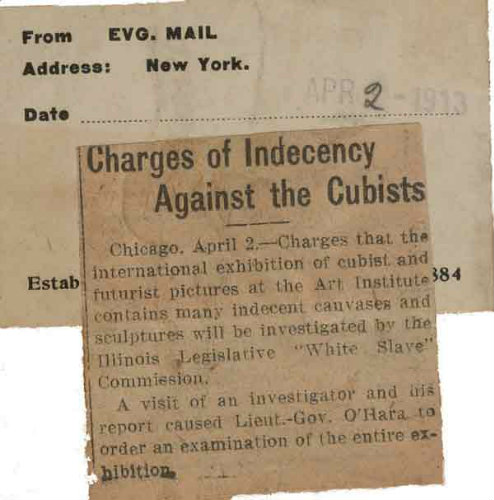
61182
Cubists Investigated
1913-04-02 00:00:00
1913-04-02 00:00:00
The headline to New York's Evening Mail alerted readers to events in Chicago, "Charges of Indecency against Cubists"
Charges that the international exhibition of cubist and futurist pictures at the Art Institute contains many indecent canvases and sculptures will be investigated by the Illinois Legislative "White Slave" Commission.
A visit of an investigator and his report caused Lieut.-Gov. O'Hara to order an examination of the entire exhibition.

61180
Art Purchased
1913-04-03 12:37:55
1913-04-03 12:37:55
Walter Pach's notebook included detailed sales records. On April 3, he sold Amadeo de Sousa-Cardoza's "Return from the Chase" for $54 to Manierre Dawson.

61441
Manet Painting Damaged
1913-04-04 00:00:00
1913-04-04 00:00:00
Moving hundreds of pieces of art from Europe to the U.S. and between New York, Chicago, and Boston required great attention and care. Correspondence between AAPS and shippers, packers, and insurers reveals the difficulties they encountered.
"Upon opening the package we discovered that the glass on the Manet was broken badly; has torn the canvass away from the stretcher and scratched the painting in perhaps a dozen places.
We realized, by the appearance of things, that the express company had opened the box, removed all vestige of broken glass, reboxed the picture and delivered it to us as if in good order—without any explanation," wrote William O. O'Brien of O'Brien Art Galleries.
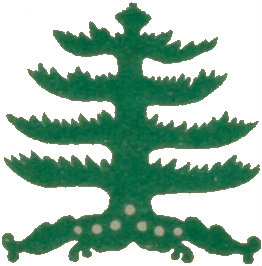
62110
Artist Dawson Hoped for Picasso Painting
1913-04-04 00:00:00
1913-04-04 00:00:00
Artist Manierre Dawson visited the exhibition at the Art Institute routinely. Amid his entries about the show, he wrote of his desire to buy paintings.
He observed, "The French paintings are more entrancing than ever. I have $220.00. I have begged Father to lend enough so I can buy Picasso's "Woman with a Pot of Mustard." $324.00 Father is disgusted with the idea of taking such a thing home. I said it would look marvelous over the mantel in the library. That, to him, was a horrible thought. I may have to settle for the Duchamp, "NuEncisse." $162.00 which is larger, almost as large as the "Nude descending Staircase."
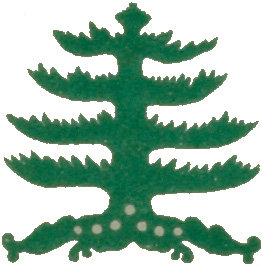
62110
Artist Dawson's Work Included
1913-04-04 18:00:55
1913-04-04 18:00:55
Artist Manierre Dawson expressed his pleasure in his diary at having one of his paintings added to the show.
"I wish the show could stay longer. Thinking only of the Cubist room, and forgetting just then, coming through the south galleries on the way and just before my destined beginning of looking, I stuck my head through the doorway of the S.E. room and startled, saw my painting above the line, of course, and with a slight reflected spot on it. But what joy to have a picture in that company," he exclaimed.
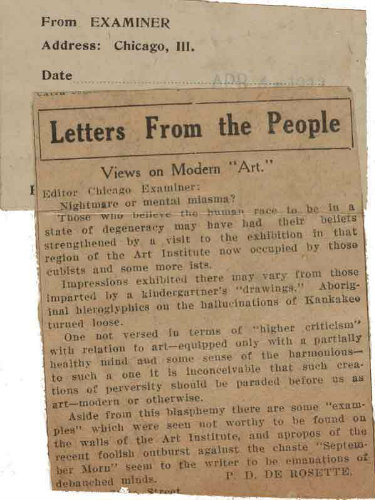
62110
Reader Questioned Modern Art
1913-04-04 19:00:00
1913-04-04 19:00:00
Chicago Examiner reader P. D. De Rosette wrote a letter to the editor decrying the exhibition at the Art Institute.
Editor Chicago Examiner:
Nightmare or mental miasma?
Those who believe the human race to be in a state of degeneracy may have had their beliefs strengthened by a visit to the exhibition in that region of the Art Institute now occupied by those cubists and some more ists.
Impressions exhibited there may vary from those imparted by a kindergartner's "drawings." Aboriginal hieroglyphics on the hallucinations of Kankakee turned loose.
One note versed in terms of "higher criticism" with relation to art—equipped with a partially healthy mind and some sense of the harmonious—to such a one it is inconceivable that such creations of perversity should be paraded before us as art—modern or otherwise."

60935
Boston Floorplan Laid Out
1913-04-05 19:00:00
1913-04-05 19:00:00
Walt Kuhn enumerated his plans and concerns about taking the International Exhibition of Modern Art to Boston.
His letter included a diagram of the exhibition set-up at the Copley Society. He offered his impression of Desmond Fitzgerald and concluded, "He's the real stuff." Kuhn worried whether the large number of clergy he spotted in the street "will raise the devil." He also explained that they intended to decorate with greens as they did at the armory in New York.

61180
Art Purchased
1913-04-07 12:37:55
1913-04-07 12:37:55
Walter Pach's notebook included detailed sales records. On April 7, he sold Duchamp's "Nu-esquisse" for $162 to Manierre Dawson.
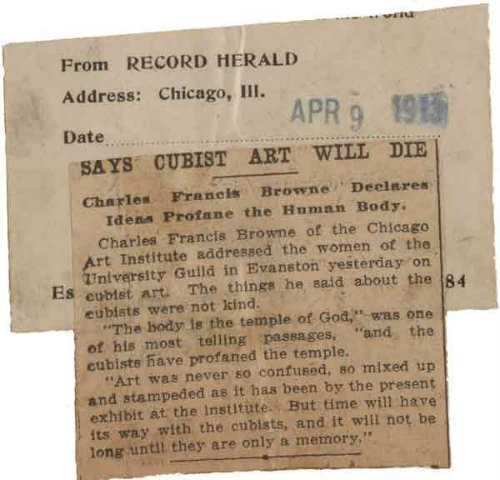
61182
Cubists Predicted to Die
1913-04-08 00:00:00
1913-04-08 00:00:00
Charles Francis Browne, landscape painter and teacher, addressed the women of the University Guild in Evanston, Illinois. Browne repeated his claims on a lecture circuit while the exhibition was on display at the Art Institute.
According to the brief item in Chicago's Record Herald April 9, 1913:
Browne explained, "The body is the temple of God and the cubists have profaned the temple. Art was never so confused, so mixed up and stampeded as it has been by the present exhibit at the institute. But time will have its was with the cubists, and it will not be long until they are only a memory."

61180
Baltimore Club Requested Show
1913-04-09 00:00:00
1913-04-09 00:00:00
Organizers fielded inquiries from around the U.S.
Henry H. Wiegand, secretary of Baltimore's Charcoal Club, asked about the availability of the exhibition to travel to Baltimore in May 1913. Arthur B. Davies replied that the show was not available.

61180
Art Purchased
1913-04-11 18:00:55
1913-04-11 18:00:55
Walter Pach's notebook included detailed sales records.

62110
Duchamp Praised Work
1913-04-13 00:00:00
1913-04-13 00:00:00
Jacques Villon, the oldest brother of the Duchamp family of artists, wrote to Walter Pach to congratulate him for his work with "A. P. and S." [AAPS]
He extended his praise and thanks to Davies and Kuhn as well. Villon had eight pieces in the exhibition; each sold to art patrons during the show.

61180
Art Purchased
1913-04-15 12:37:55
1913-04-15 12:37:55
Walter Pach's notebook included detailed sales records.

61180
Art Purchased
1913-04-16 12:37:55
1913-04-16 12:37:55
Walter Pach's notebook included detailed sales records, and a reminder to himself to "Write Vollard about Lithos Mr. Sheldrick."

61180
Iowa Club Requested Show
1913-04-17 00:00:00
1913-04-17 00:00:00
Walt Kuhn telegrammed Mrs. F. B. Crowley, Secretary of Art Advisory Committee in Des Moines, Iowa.
He declined her request to show the American paintings in that city.

62110
Artist Duchamp-Villon Debated Work
1913-04-18 00:00:00
1913-04-18 00:00:00
Artist Raymond Duchamp-Villon wrote to Walter Pach.
He discussed his participation in the exhibition. Like his brothers, Duchamp-Villon had several pieces in the show. And, he expressed his concern about the commodification of Cubist art.

61180
Kuhn Proposed to Omit American Section
1913-04-18 18:00:55
1913-04-18 18:00:55
Walter Kuhn telegrammed Edward Warren of the Copley Society of Boston.
Kuhn explained some of the difficulties they experienced in the Chicago exhibition. He advised Warren to omit the American section.
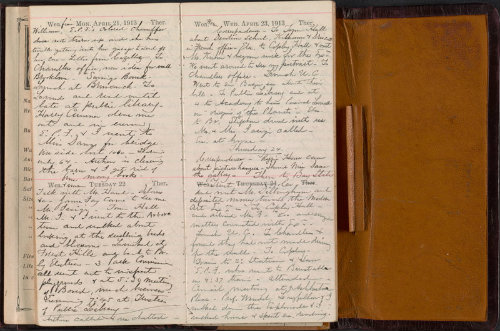
61441
Fitzgerald Prepared for Boston Show
1913-04-23 12:37:55
1913-04-23 12:37:55
Desmond Fitzgerald recorded preparations in his diary.
"Elec to Copley Hall + met Mr. Kuhn + began work for the Ex. We went around to see my portrait," he noted.
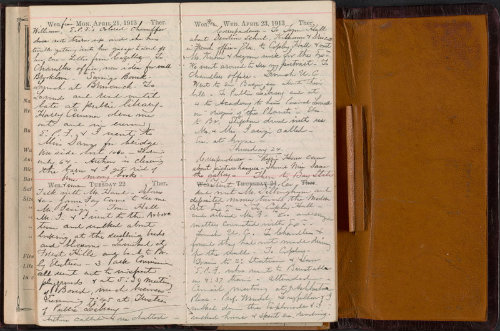
61441
Fitzgerald Financed Boston Show
1913-04-24 00:00:00
1913-04-24 00:00:00
Desmond Fitzgerald recorded details in his diary about his involvement in the exhibition at Copley Hall.
"[...] and deposited money towards the Modern Art Ex - To Copley Hall," he noted.
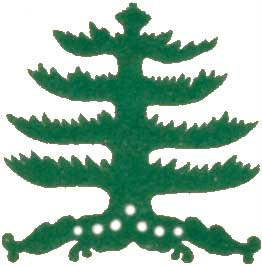
61182
Press Preview in Boston
1913-04-27 19:00:00
1913-04-27 19:00:00
Walt Kuhn shared news of the press preview with Vera. He was optimistic about its reception in Boston.
Sunday night [April 27 1913]
Dear Chick
Got the clippings and four notes from you so far. I fear that owing to the late hour of writing this will not reach you in Mondays early mail.
Owing to the slow procedure of the hangers it took all day Friday and up to Saturday 10/30pm to complete the job, but it is a good job, and all the Copley people seem pleased. As an art demonstration it does not approach the armory show but as an art exhibition, it’s a hummer.
Page 2
This afternoon was press view. Mr Warren introduced me to all the prominent people. There were only about 120 present. All intelligent and not a single silk hat Some I met were Hood, the president of the museum. Mrs Jack Gardner Mr Anders a millionaire, but bright as a dollar and made a convert of me in short order. There wasn’t any laughing, every body interested. The president of the Copley’s is a handsome gray haired man, looks like an English general. When I first met him he was cold and stern, but has thawed out gradually and introduced me to all the
Page 3
real people. He says that practically every body showed up. I also met Dr. Prinz the famous authority on mental influences, etc. They all say he will surely write an important paper on modern art as the direct result of the show. I also met a lot of swell ladies who’s names I have forgotten. On the whole thing I think Boston will go wild over the show. They are all prepared to think in this town. There wasn’t any tea party about it, just a lot of earnest people searching
Page 4
Dr Münsterberg, the famous was also on hand. The whole Copley bunch have the right spirit. So much that I have to organize everything about selling photo, post-cards etc. It’s such a relief to deal with people who are not after every dollar.
They are still the least bit nervous about how the public is going to take things. Our fear of the clergy has diminished considerably. I am now figuring on leaving on the boat on Tuesday afternoon things seem to be in splendid shape and I am anxious to get back home. If need
Page 5
be I can come here for a day or so later on.
Pendergast has done some things, since the show, which are already in advance of the beauties he has done before. He never ceases lauding the exhibition.
You may get one more note before I leave, unless I am forced to stay a day longer.
Love to you and Brenda.
W.

61441
Opened in Boston
1913-04-28 14:00:00
1913-05-19 19:00:00
Copley Society of Boston hosted the final stop of the International Exhibition of Modern Art in late spring at Copley Hall.

61182
Additional Cards Sold in Boston
1913-04-28 19:00:00
1913-05-19 19:00:00
AAPS issued commemorative postcards for each venue for the exhibition.
Printed on the other side of Augustus John's picture is: Exhibition modern art; Association of American Painters and Sculptors; April 28th to May 19th, 1913; at Copley Hall, Boston, Mass.
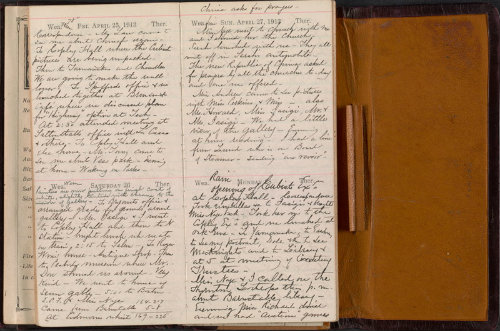
61441
Fitzgerald Refelected on Opening
1913-04-28 22:00:00
1913-04-28 22:00:00
Desmond Fitzgerald recorded details in his diary about his involvement with the exhibition at Copley Hall.
At the outset Fitzgerald noted, "Rain." He continued, "Opening of Cubist Ex. at Copley Hall. Correspondence Took umbrella + to Tasiges + [illegible] Miss Nye Eck - took her to the Copley Ex and we lunched at Oak Ave."
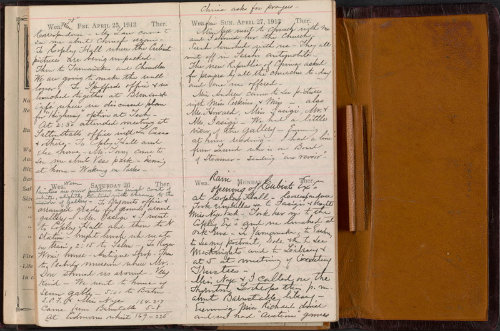
61441
Requested More Assistants to Handle Crowds
1913-04-29 00:00:00
1913-04-29 00:00:00
Desmond Fitzgerald and other organizers perhaps underestimated interest in the exhibition in Boston. He recorded details in his diary.
He began, "Rain," and proceeded to note the day's activities. "There is a rush to the Cubist Ex. Have had to employ many Assistants," he observed.

61180
Art Purchased
1913-04-30 00:00:00
1913-04-30 00:00:00
Walter Pach's notebook included detailed sales records from the exhibition.

61180
Art Purchased
1913-05-15 12:37:55
1913-05-15 12:37:55
Walter Pach's notebook included detailed sales records from the exhibition.

61180
Seattle Dealer Requested Advice
1913-05-16 00:00:00
1913-05-16 00:00:00
Arthur B. Davies received an inquiry from Henry Schultheis, a dealer. Schultheis had a client in Seattle who wished to organize an exhibition of Cubist paintings.
AAPS declined their request for assistance.

61180
Art Purchased
1913-05-19 12:37:55
1913-05-19 12:37:55
Walter Pach's notebook included detailed sales records from the exhibition.

62110
Pach Negotiated Sale
1913-06-06 00:00:00
1913-06-06 00:00:00
This telegram indicates how Walter Pach brokered sales between artists and patrons.
Walter Pach, in New York, sent a telegram to Constantin Brancusi, in Paris, requesting bronze and marble sculptures of [Mademoiselle] Pogany. Brancusi lent a plaster Mademoiselle Pogany for the exhibition. The day after dispatching the telegram, June 7, Walter Pach sold a bronze Pogany to Robert W. Chanler for $550.

62110
Dawson Offered Money for Duchamp
1913-06-17 00:00:00
1913-06-17 00:00:00
Walter Pach wrote to Manierre Dawson about a potential buyer for the Duchamp painting that he acquired.
The buyer, a well-to-do, Chicago-based broker and art collector, offered $200. Pach warned, "But he hates the Cubists and just wanted the picture 'as a joke, to show his friends.'
And, he recounted vivid exchanges with visitors to the show in Boston. Pach also wrote approvingly of Dawson's painting in the Boston exhibition. Pach volunteered that he invented stories and questions to amuse and bemuse the Boston patrons who attended the exhibition.
Pach observed, "Well, the picture looked very well in Boston and I got to like it better and better. Once, in my endlessly-applied for explanations, I made up a romantic libretto for it. I said that (if they had to have a subject for it) they should take it as inspired by some experience that would be written about by a poet as a person coming out of the darkness into one's life and being very strong and important there for a time and then going slowly back again. That doesn't seem even as pretty as I write it, but I believe I had enthusiasm enough as I stood before the pictures to carry quite a few people over the line. I got trickier and trickier, one mean stunt I worked several times was to ask people what they thought of those lines at the end of Twelfth Night (not telling them what it was), "When that I was a little, little boy etc. and they said it was just nonsense I would say that Shakespeare wrote it and show them that "unreasonable things" like his work and the Cubists could be good. I met some fine people in Boston, with many thousand rotters and gapers, of course, but New York was the only place for sales."

61180
Pach Composed Essay
1913-07-01 12:37:55
1913-07-01 12:37:55
Walter Pach drafted 'Le Mouvement Moderne aux Etats-Unis,' an essay about "l'Exposition Internationale de 1913" in which he explained how Americans demonstrated their interest in modern art.
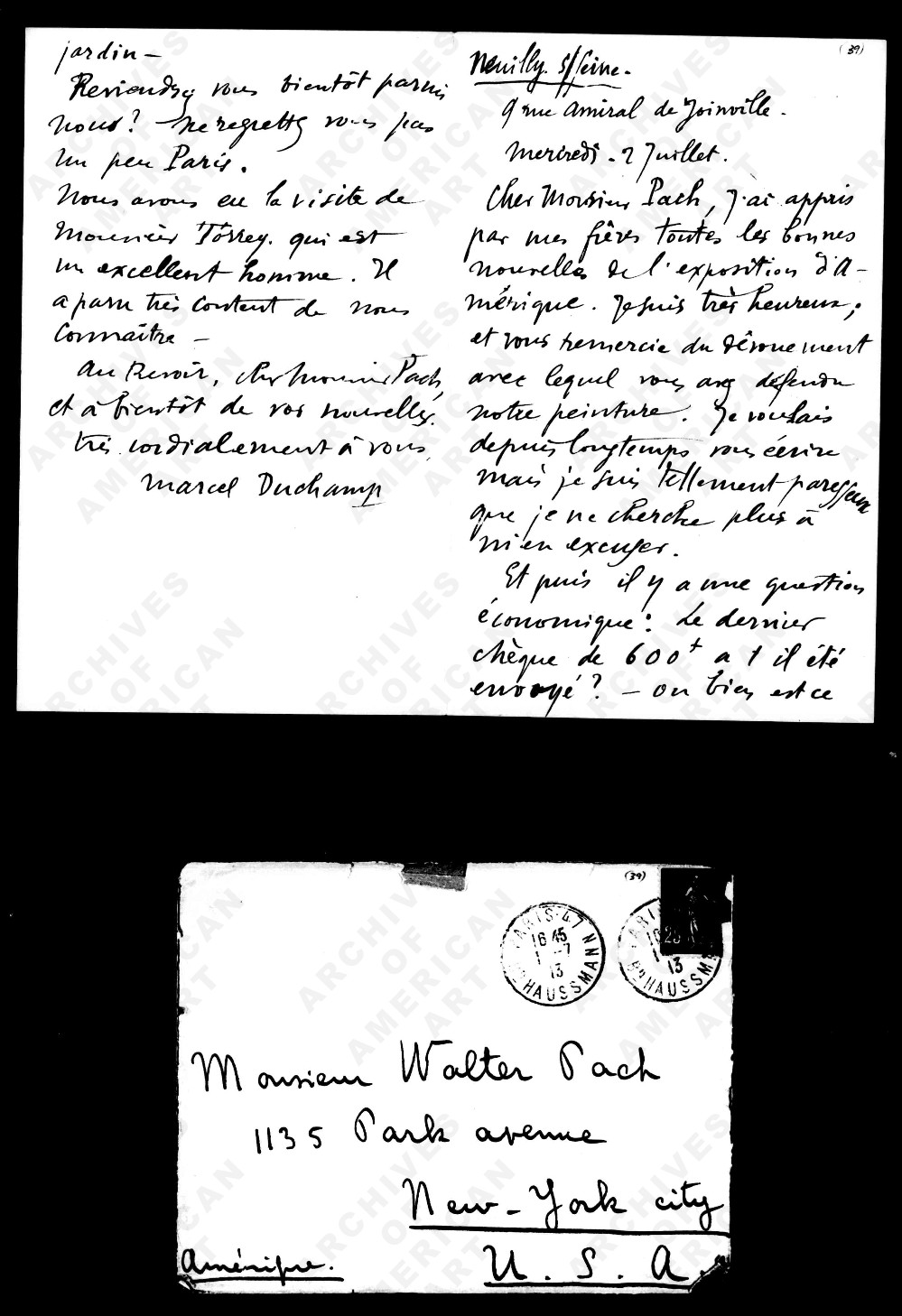
62110
Duchamp Sought Payment
1913-07-02 00:00:00
1913-07-02 00:00:00
Marcel Duchamp thanked Walter Pach for his efforts and inquired about an outstanding payment. This letter underscores the ways in which Walter Pach acted as a broker between the European artists and AAPS.
Duchamp wrote, "J'ai appris par mes frères toute les bonnes nouvelles de l'exposition l'Amerique." [french] I learned all the good news of the American exhibition from my brothers.

61180
Thannhauser Letter to Pach
1913-07-16 00:00:00
1913-07-16 00:00:00
Heinrich Thannhauser of Moderne Galerie wrote to Walter Pach to discuss which art pieces were sent to America for the exhibition and arrangements to be made with dealers and artists regarding other artworks. The letter includes a handwritten note from Pach to Kuhn at bottom.

60935
Letter to Vera from Ogunquit
1913-07-20 16:00:00
1913-07-20 16:00:00
Walt Kuhn described his creative process and his efforts to return to his art practice to Vera while he stayed at their home in Ogunquit, Maine.
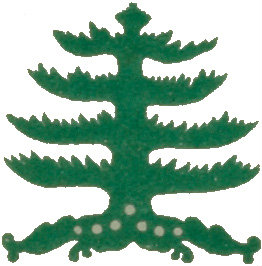
62110
Artist Reflected on Legacy
1913-10-05 00:00:00
1913-10-05 00:00:00
Artist Manierre Dawson reflected on the legacy of the exhibition in Chicago in his diary.
"This literary atmosphere is in contrast with the situation among painters. A very few are feeling around for something more than academic. However, the Art Institute is still hide-bound and even more so than before Armory Show. Criticism was so severe last winter that those running the galleries are scared to death. Art stores along Michigan Avenue (dealers) are dead-set against everything resembling cubism. One of the trustees of the Art Institute who thought of buying a Cézanne was talked out of it by ridicule of the examples shown in the International," he observed.

61180
Indianapolis Curator Skeptical of Modern Art
1913-12-22 00:00:00
1913-12-22 00:00:00
Clifton A. Wheeler of Indianapolis, Indiana wrote to Walter Pach about a potentional exhibition. Wheeler explained that their calendar for exhibitions was booked. He also remarked about the International Exhibition of Modern Art.
"I must confess that the exhibition in Chicago (The International) did not strike me with overwhelming force but I have enough respect for the opinions of Mr. Davies and yourself to admit that the fault may have been my own.
The principal effect the exhibition has had upon me has been to give me a more complete indifference to the facile nothings that most of the artists are painting now and a greater love for Massacio and Giorgione and the engravings of Durer," Wheeler confided.
